Trans Euro Trail Albania-Montenegro-Bosnia-Croatia
Introduction
The Trans Euro Trail (TET) is a scenic GPX route that spans the entire European continent. As of now, its length is approximately 100 thousand kilometers and continues to grow. Each country has its own linesman to curate the GPX, but the community behind it is much larger than just one person!
I’ve known Christos for the better part of my adult life. We met at a bicycle group ride I participated with my other dearest friend, Apostolos. We hit it off from the start, which led us to riding, camping, touring, and racing bikes together. As the excitement of road biking waned for Christos and me, we transitioned to motorbikes, freeing us from the hassle of transporting bicycles.
My first big bike was (and still is) a KTM LC4 640 Enduro. Christos purchased a Suzuki V-STROM 650. We rode a few times together, but due to COVID-19 and us living in different areas for a while, it was mostly short road rides. By that point, I had already traveled extensively off-road and often shared with my friends how exhilarating it is to navigate challenging mountain roads, despite the occasional risk of injury.
I believe the moment it clicked for Christos was during our first off-road ride together 2 or 3 years ago.
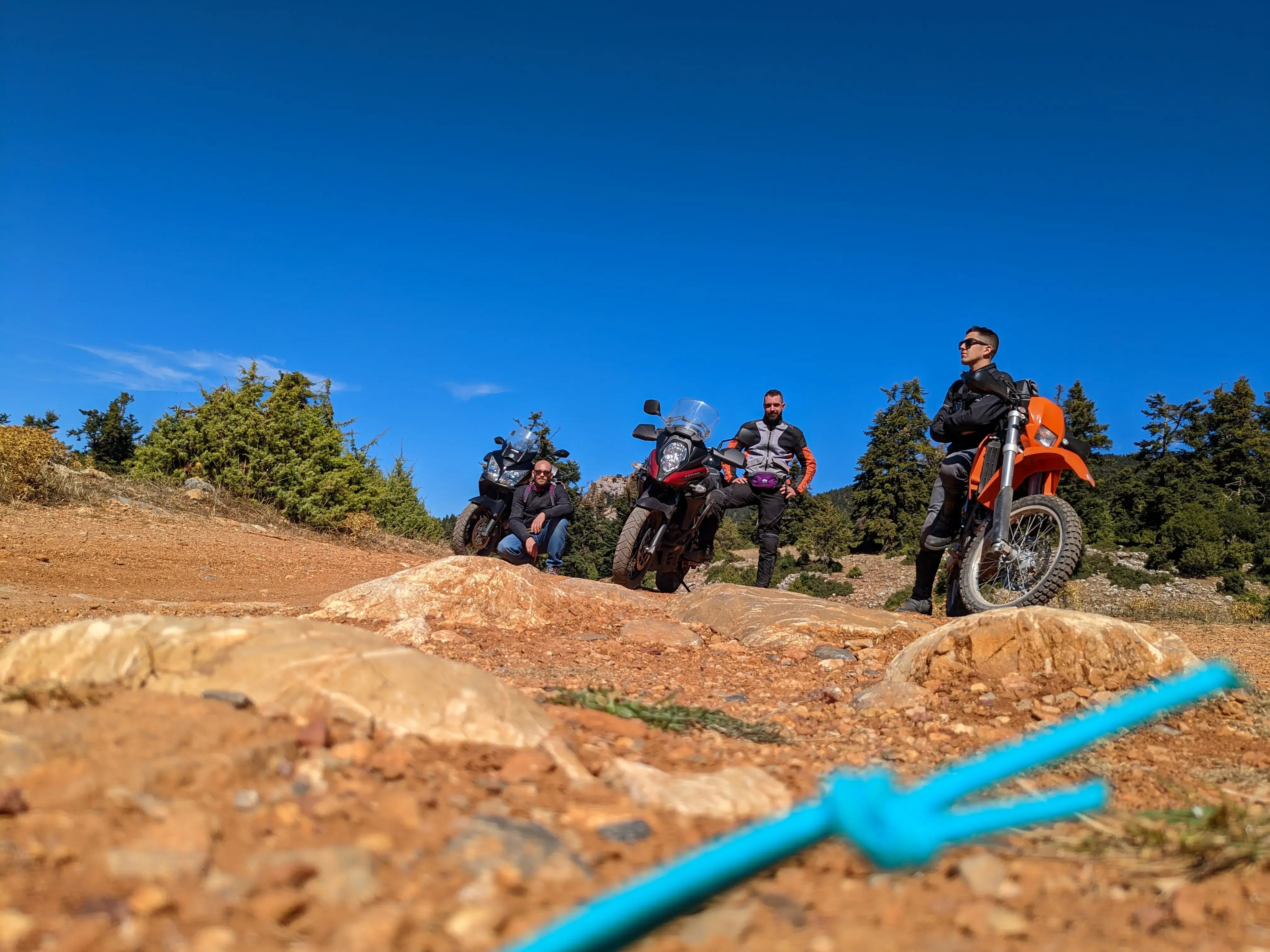
Somewhere along the Ziria mountain range.
Having done myself a big part of the Greek TET, it was a no-brainer when Christos told me we should go on a big trip to the Balkans. Up to that point we both had mid-sized adventure bikes, enough experience to tackle hard roads on them, and not enough experience to travel long distances on motorcycles.
The story
We left at noon of the first day of June and decided to ride the national road to the border crossing of Konispol. This allowed us to stay in Sarandë for the night and start the TET fresh the next day. The initial section from Sarandë to Këlcyrë was familiar terrain for us; the scenery closely resembled Greece, and the off-road was predominantly rocky.
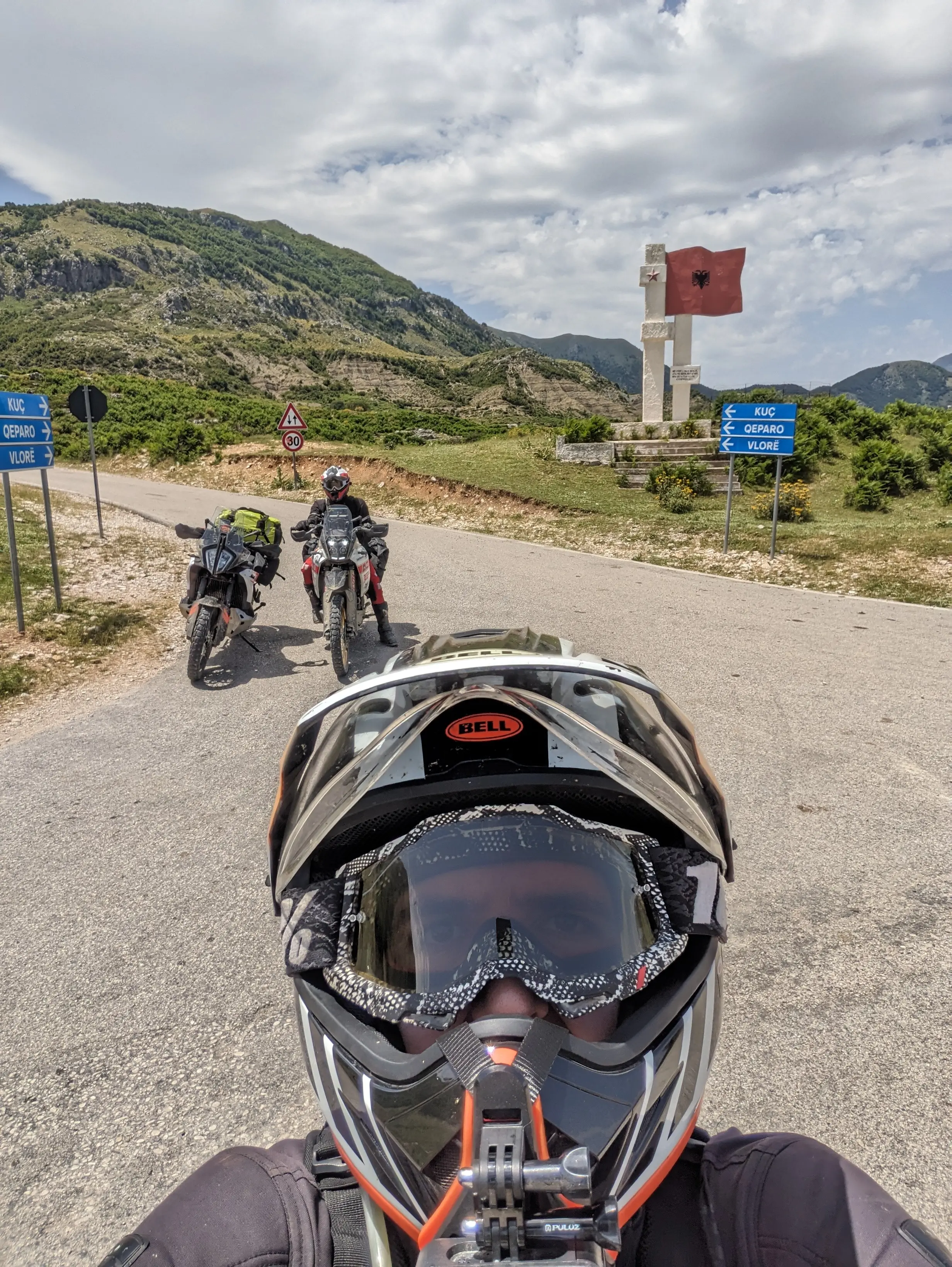
Monument to Communism.
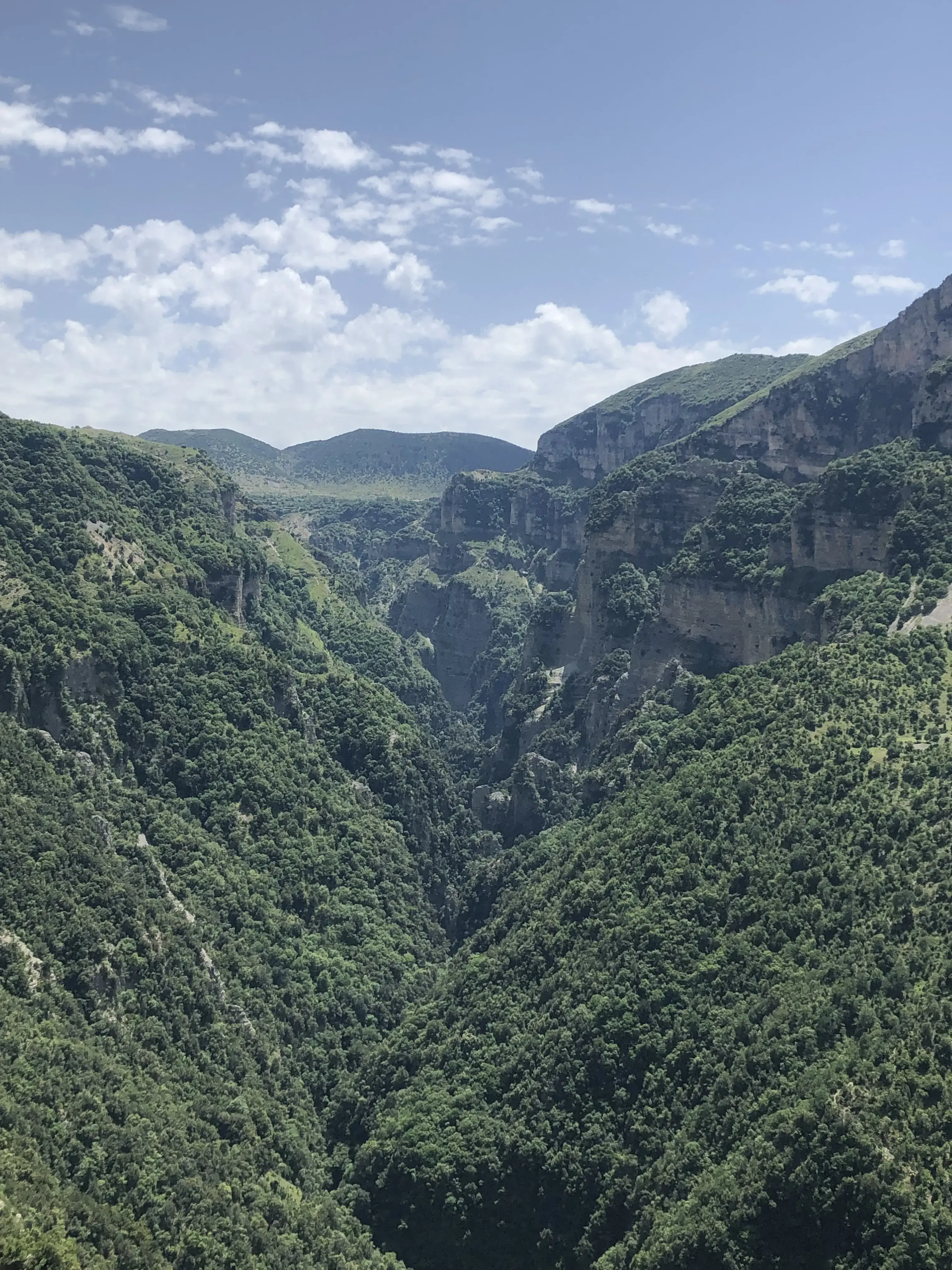
The canyons of Nivicës.
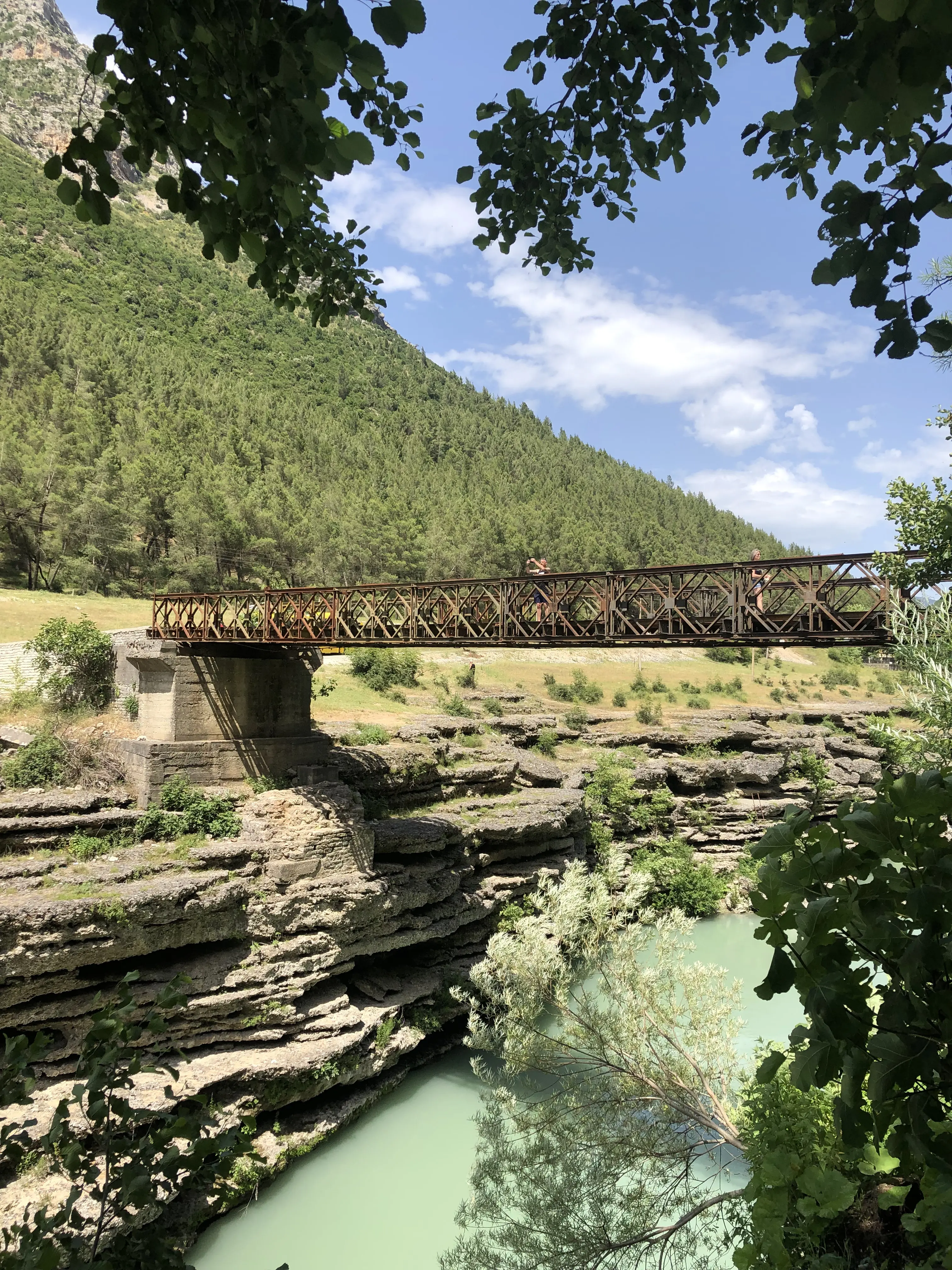
The place we stopped for lunch, alongside the Vjosa River.
After lunch, we continued riding with the goal of finding a suitable camping spot for the night. Unfortunately, Christos had a mishap. He struck a rock with such force and at such a bad angle that a retaining screw holding the bash plate bent the frame and pierced through the oil pan.
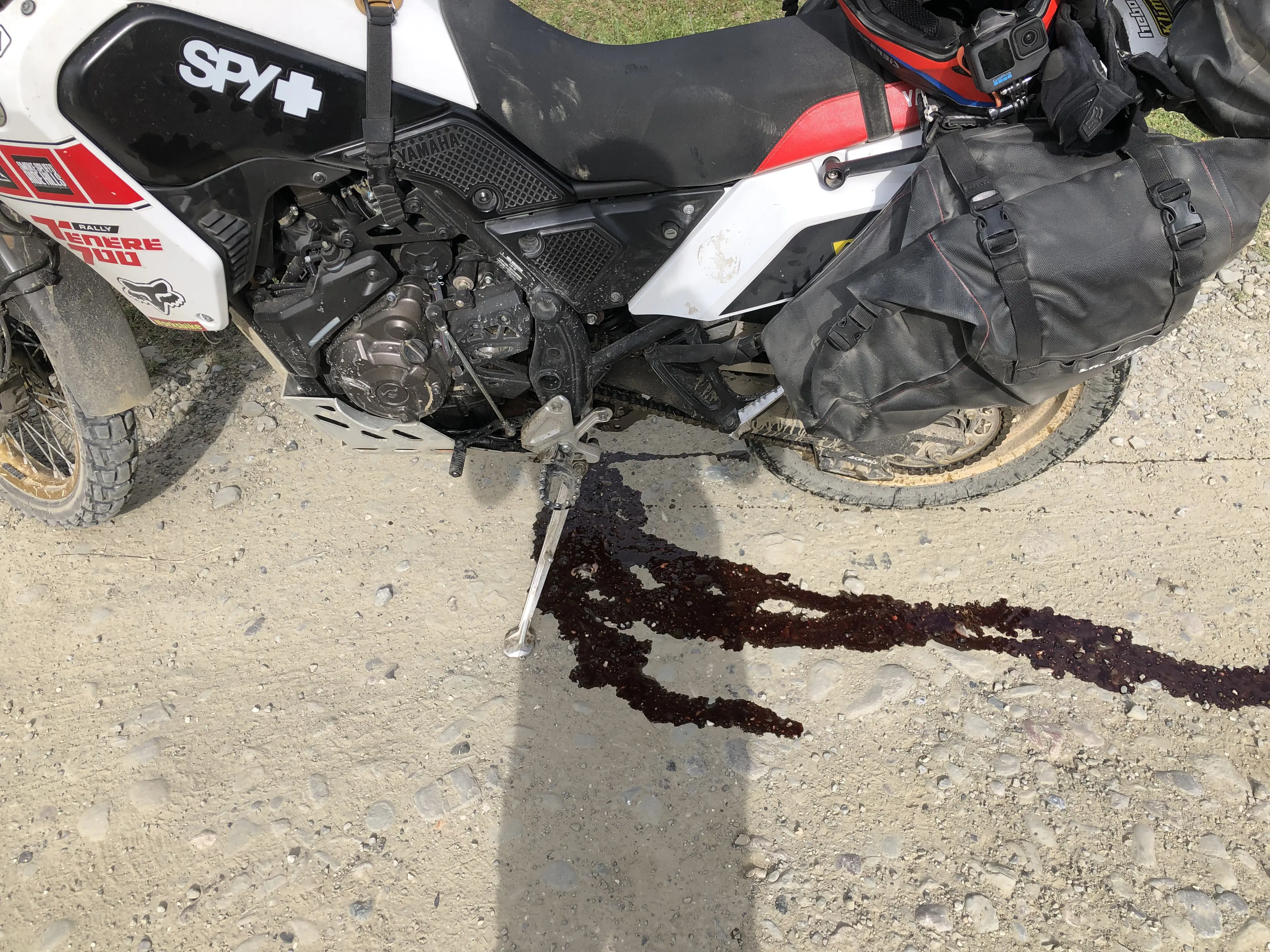
The still pink 10-50 oil at the Albanian Countryside.
Of course, the one crucial item we bought but forgot to pack was metal glue. After a day of back-and-forth trips to the nearest village, about 30 km from our campsite, we finally found some cold steel and car oil to repair the Tenere.
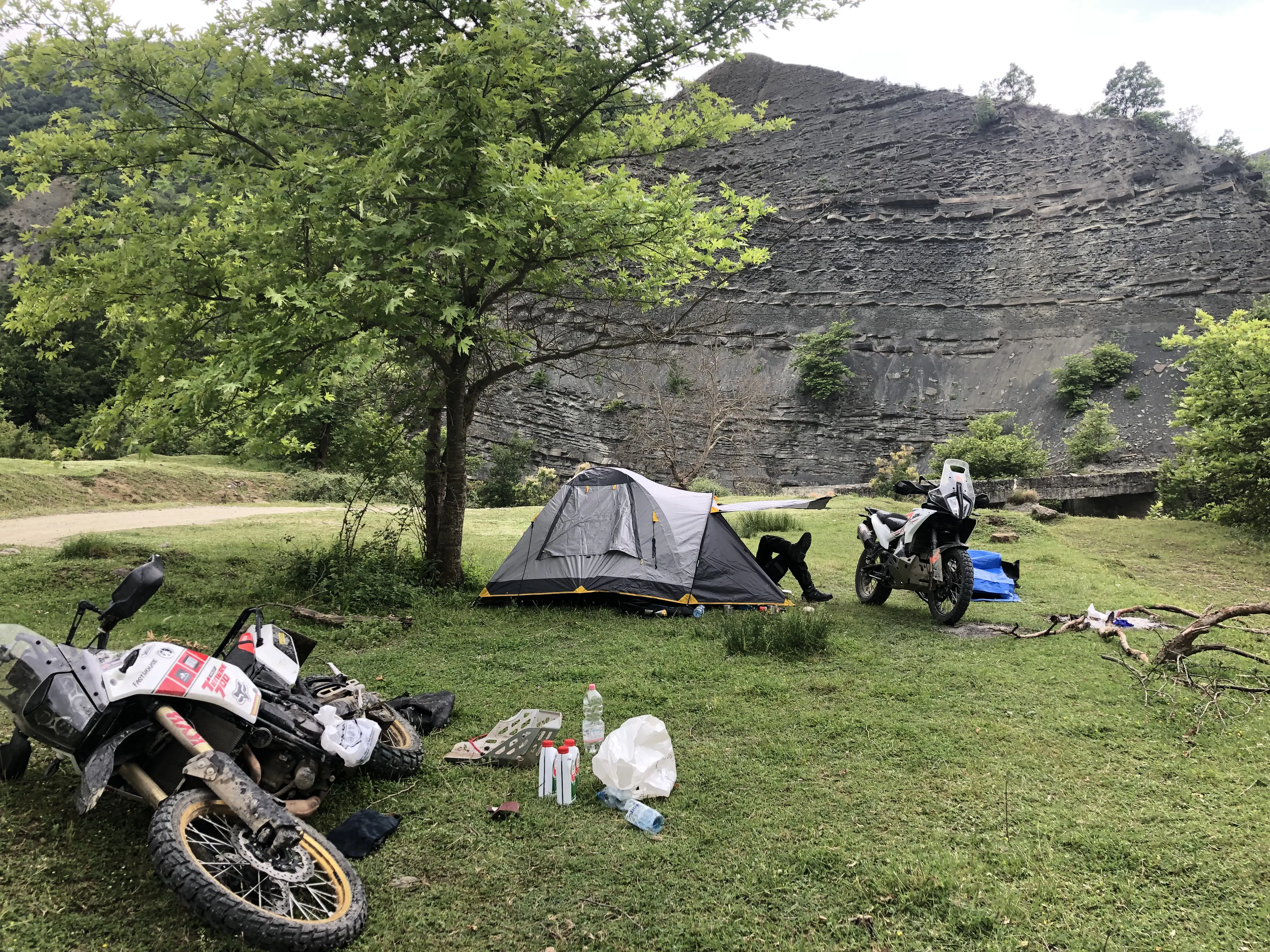
Waiting for the cold steel to dry.
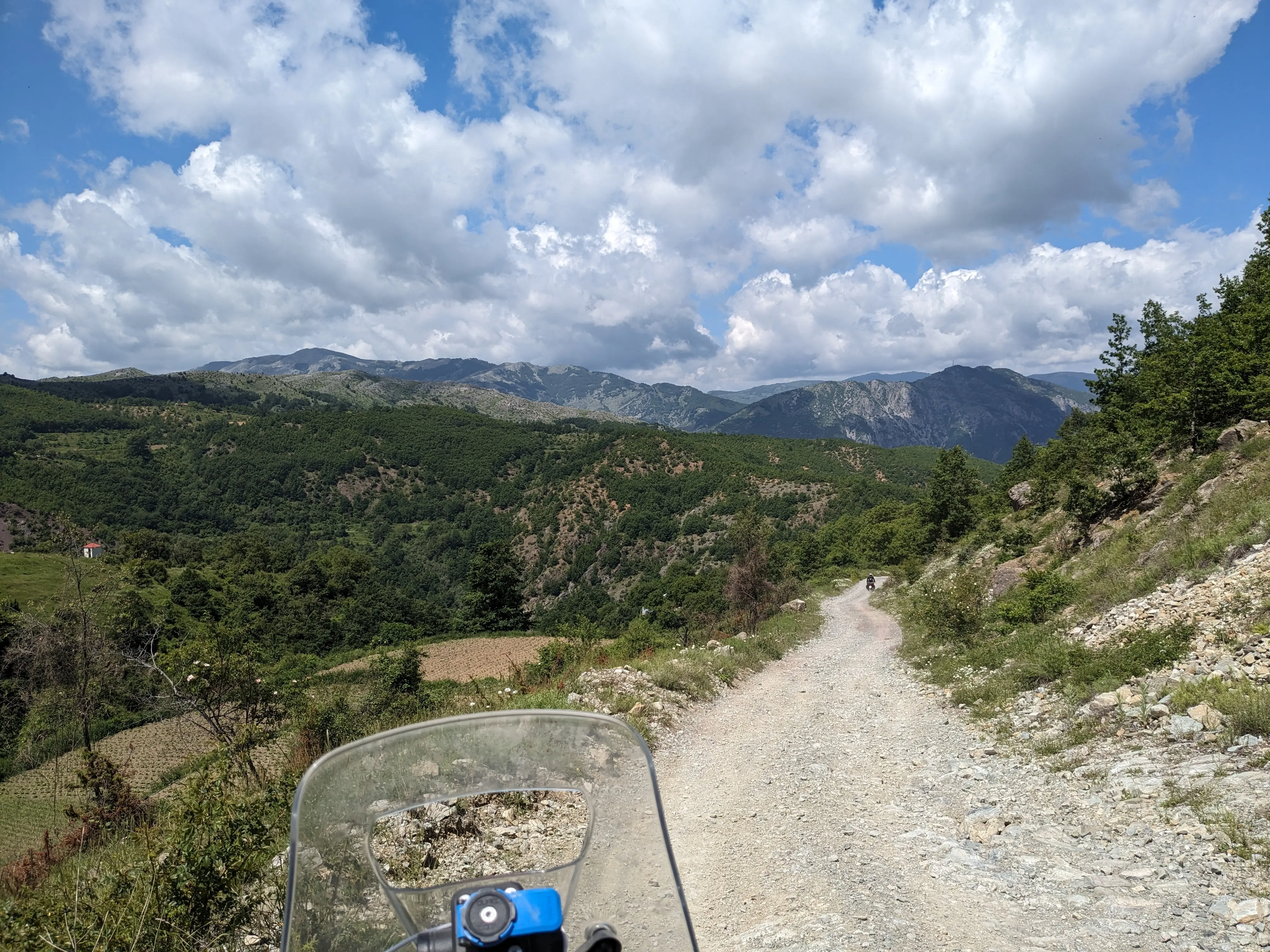
The Tenere is up and running!
We decided to head to Elbassan for the night, a 4-hour drive from our location. After a brief coffee stop in Berat, we arrived in Elbassan and explored its beautiful old city. The fourth day we had planned to do 250km and spend the night somewhere close to the border, so we could enter Montenegro the next morning. So we thought.
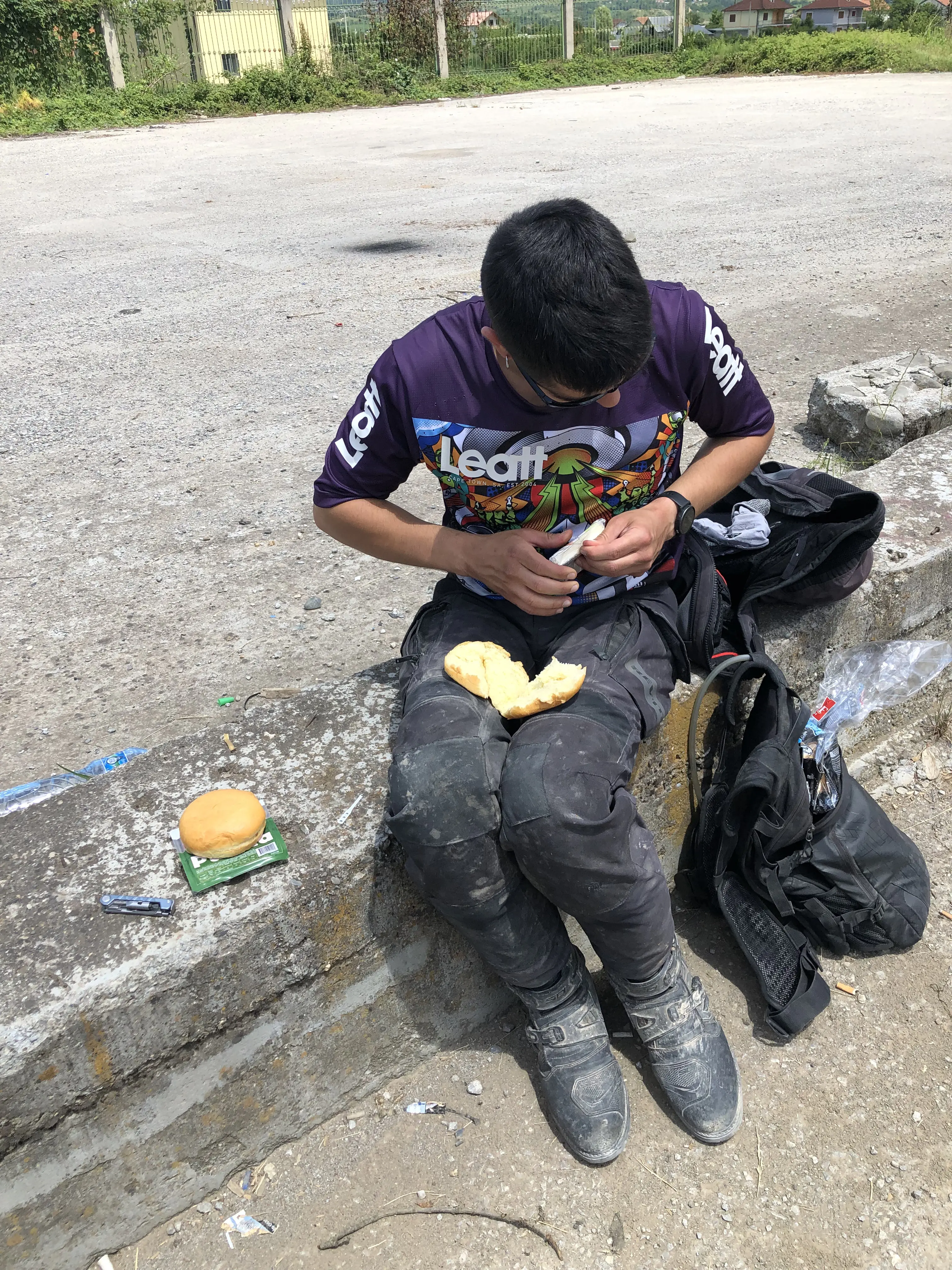
Albania does not have food-rich bakeries like we do…

The Tenere taking a siesta.
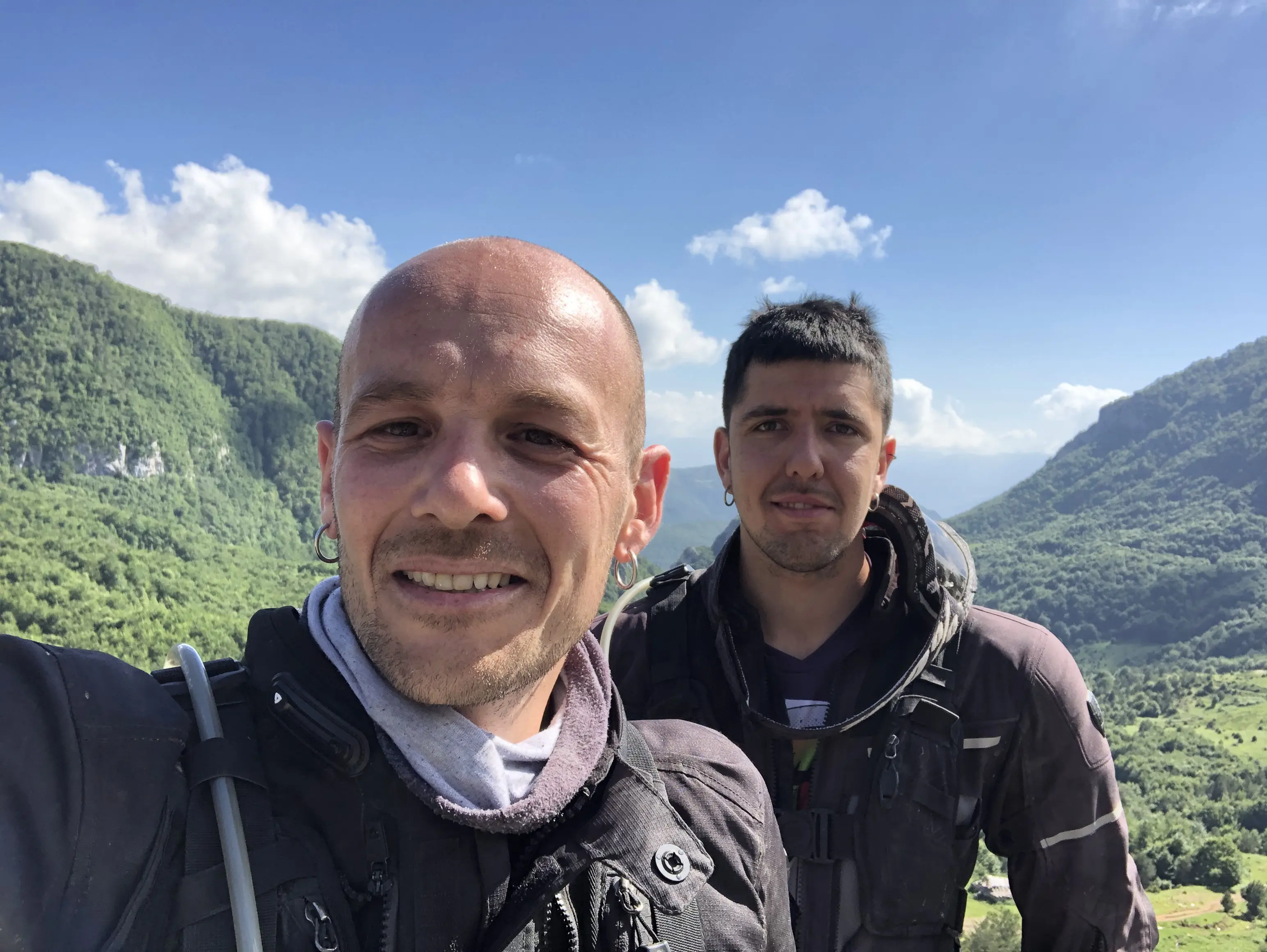
Little did we know of the suffer fest that lied ahead.
The road up to the mine wasn’t too bad, but we were tired and hungry. We still had 60 km through the Lura mountain and then an easy gravel road towards Shkodër. Without a doubt, these were some of the most challenging kilometers I’ve ever ridden on two wheels. We needed nearly 3 hours to cross the rest of the Lura mountain, as it was extremely rocky, and we struggled with the heavy bikes. They warned us that we would end up passing the point of no return and the road ahead would be gruelling, and boy did we not listen.
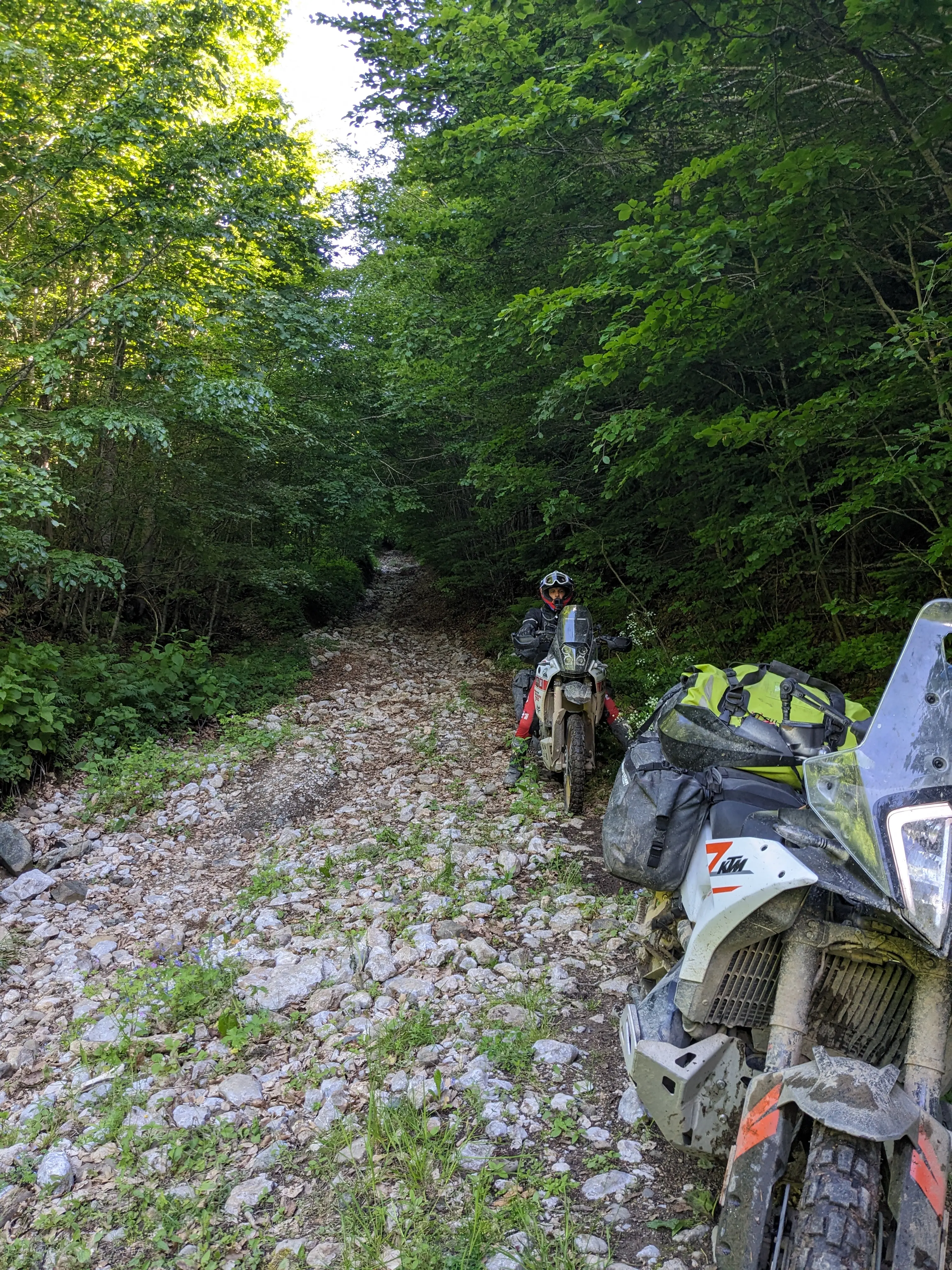
Rocks, rocks, and rocks.
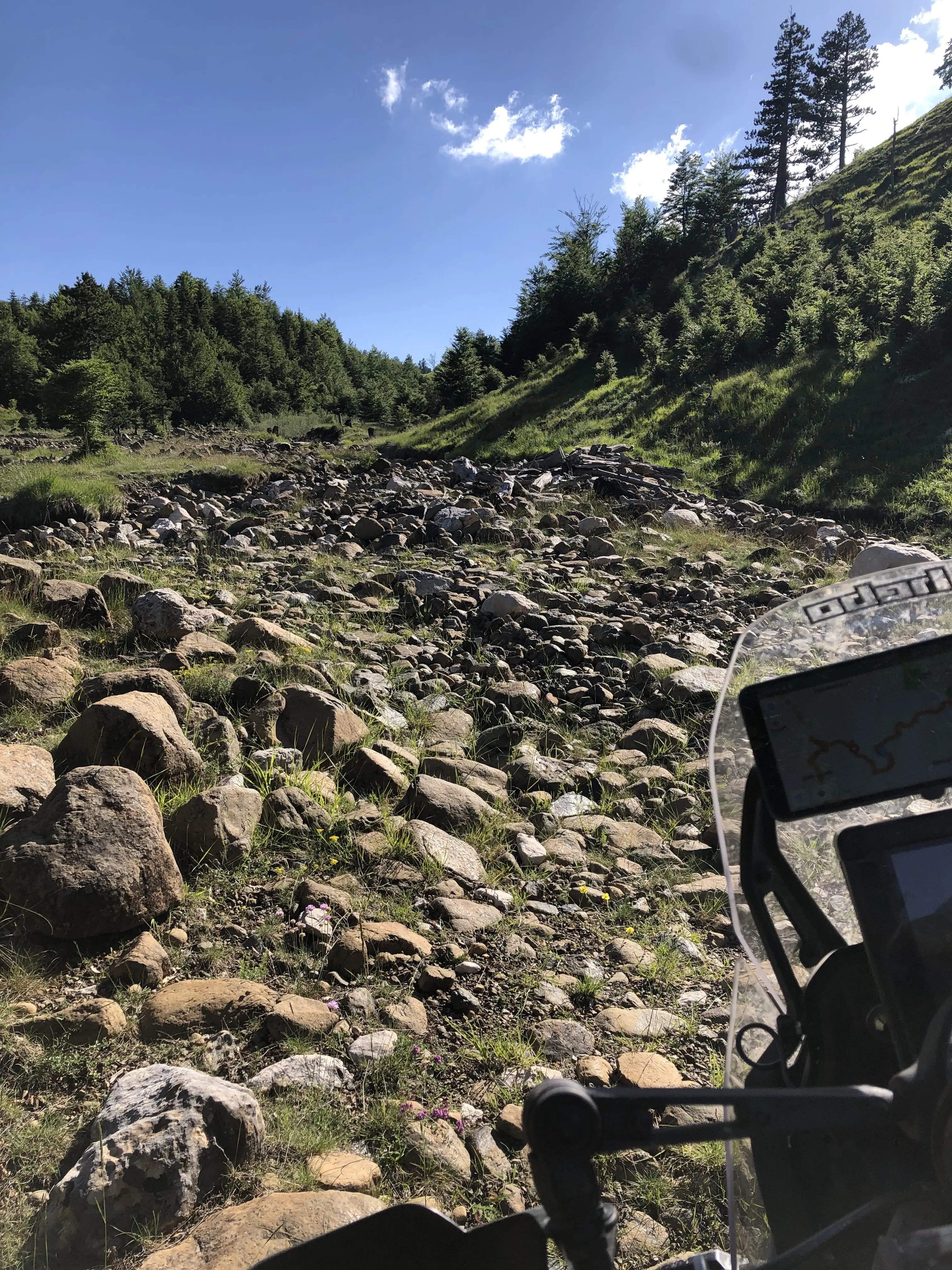
We couldn’t see the road either 🤷.
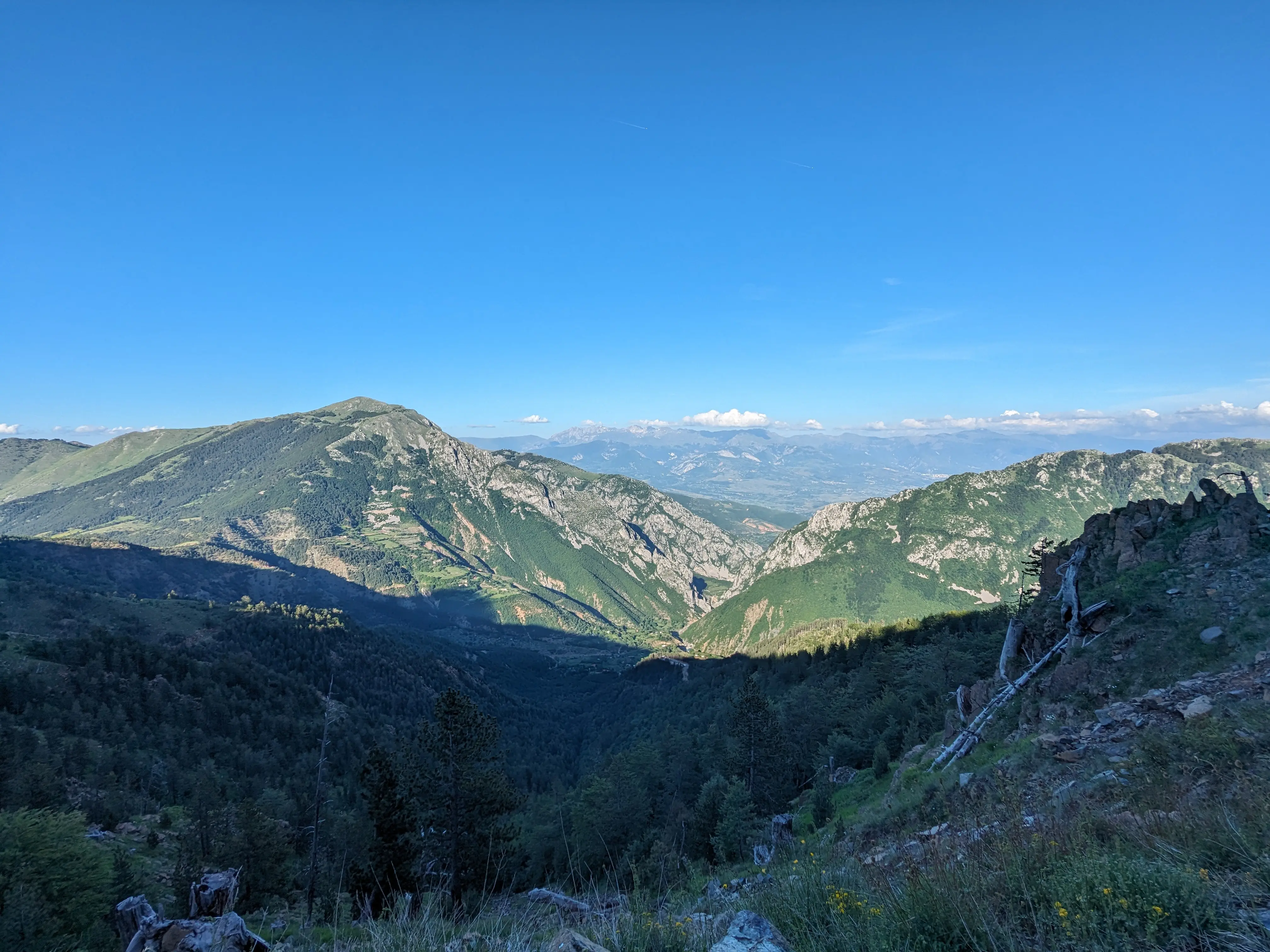
Despite the hard times it gave us, it is still one of the most beautiful places I have ever visited.
After a good nights sleep and some excellent food at Fushë-Lurë we were off for Montenegro. We planned a relaxing day with a stay in Podgorica to get some much-needed rest.
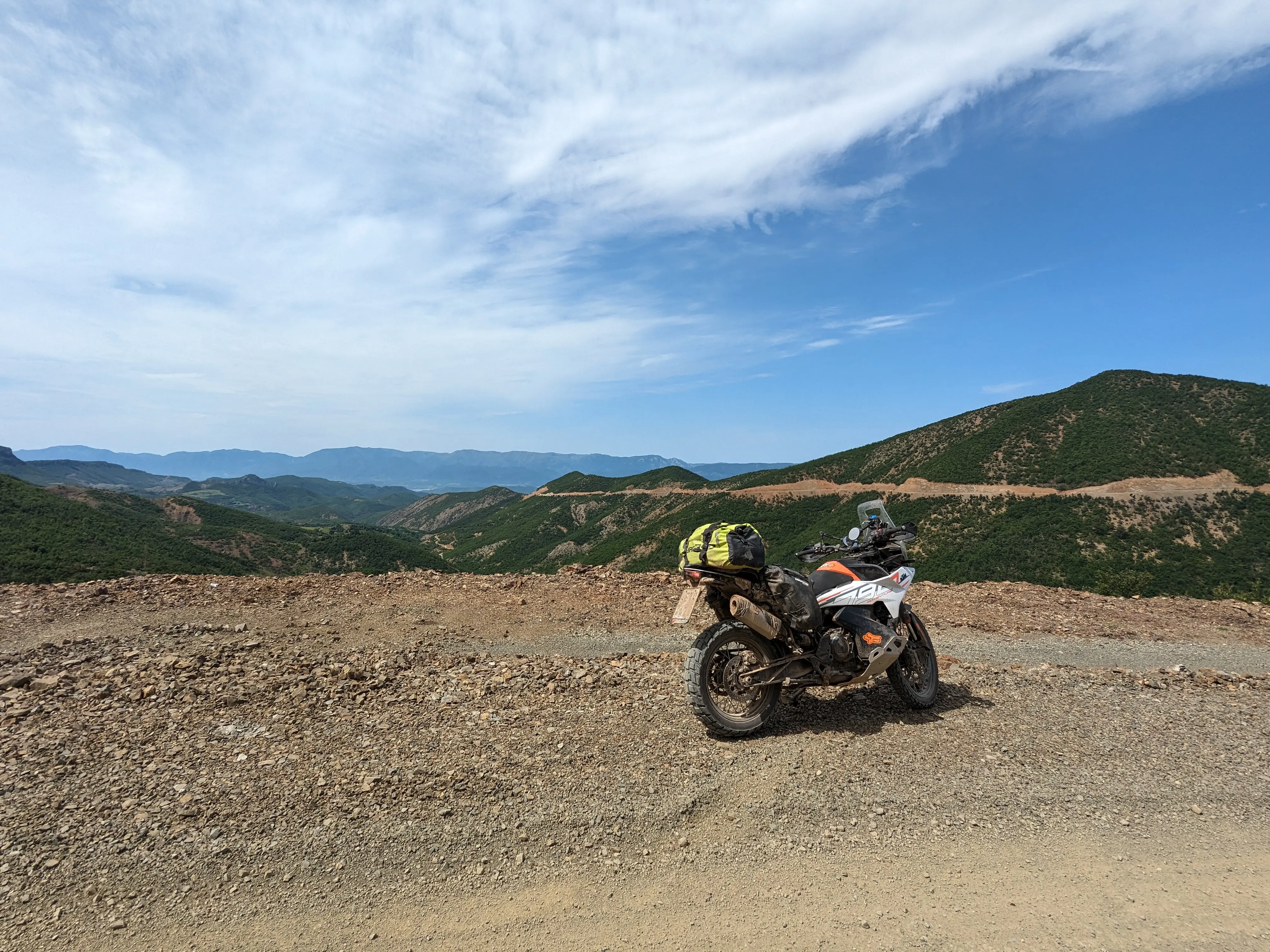
The road from Fushë-Lurë to Shkodër.

Podgorica has a large river crossing through its city center - it is full of green parks.
In Podgorica, we realized that camping while traveling at such a fast pace was impractical. We didn’t want to waste time on tasks like gathering food supplies, cooking, and setting up camp. Don’t misunderstand, we both love camping. However, it didn’t seem practical since accommodations were inexpensive and food was even cheaper. We left our camping gear in the rooms where we stayed and planned to retrieve it on our way back. Lightweight baby!
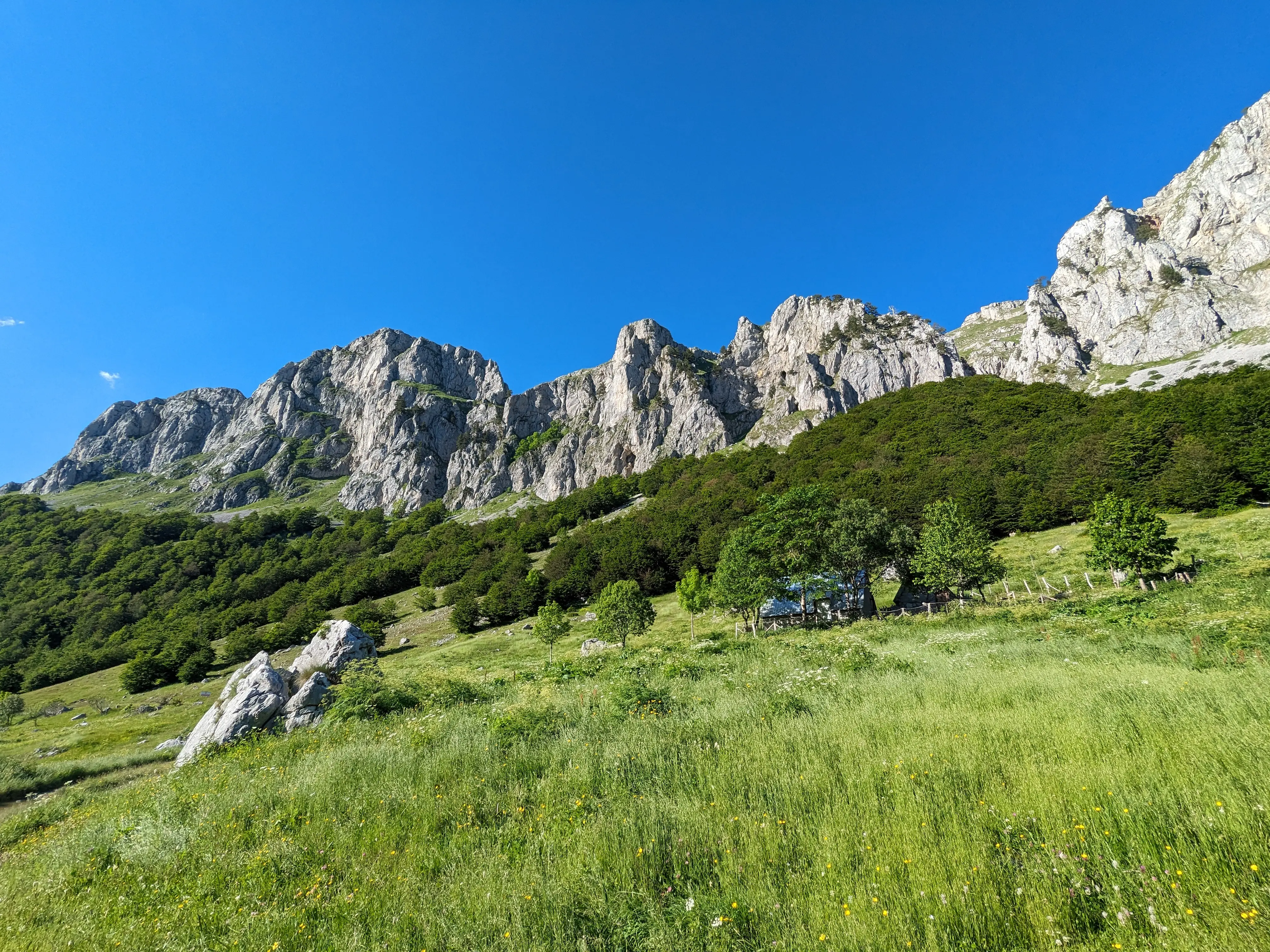
Riding in Montenegro was challenging, but each difficult section rewarded us with stunning views.
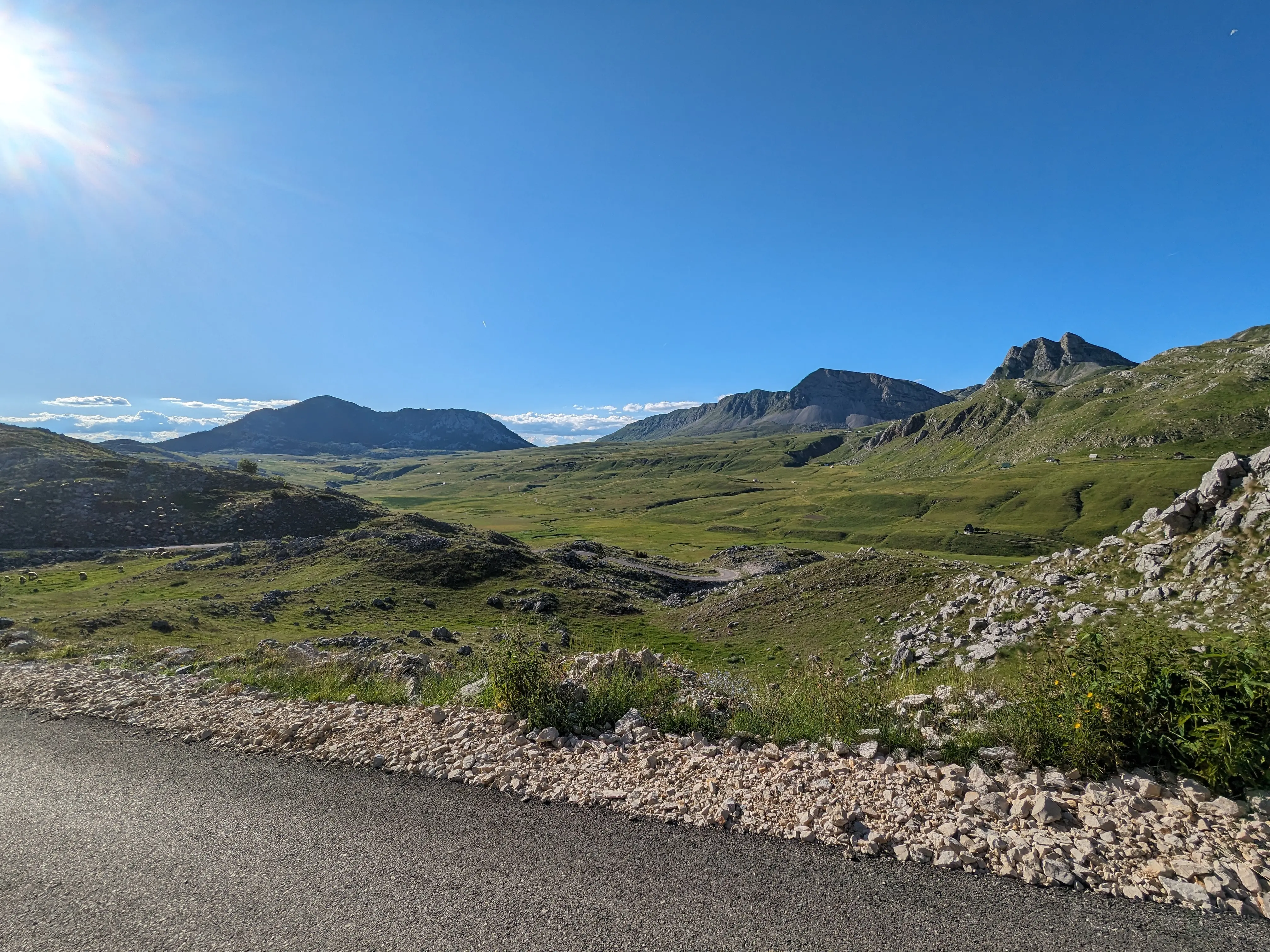
A plateau at around 1600m of altitude.
I had a little mishap at the plateau displayed above where I managed to throw the 790 into a mud pit, and we spend the next 45 minutes trying to pull it out. Including that, it made the perfect day on a bike. We slept near the border and the morning after we crossed to Bosnia.
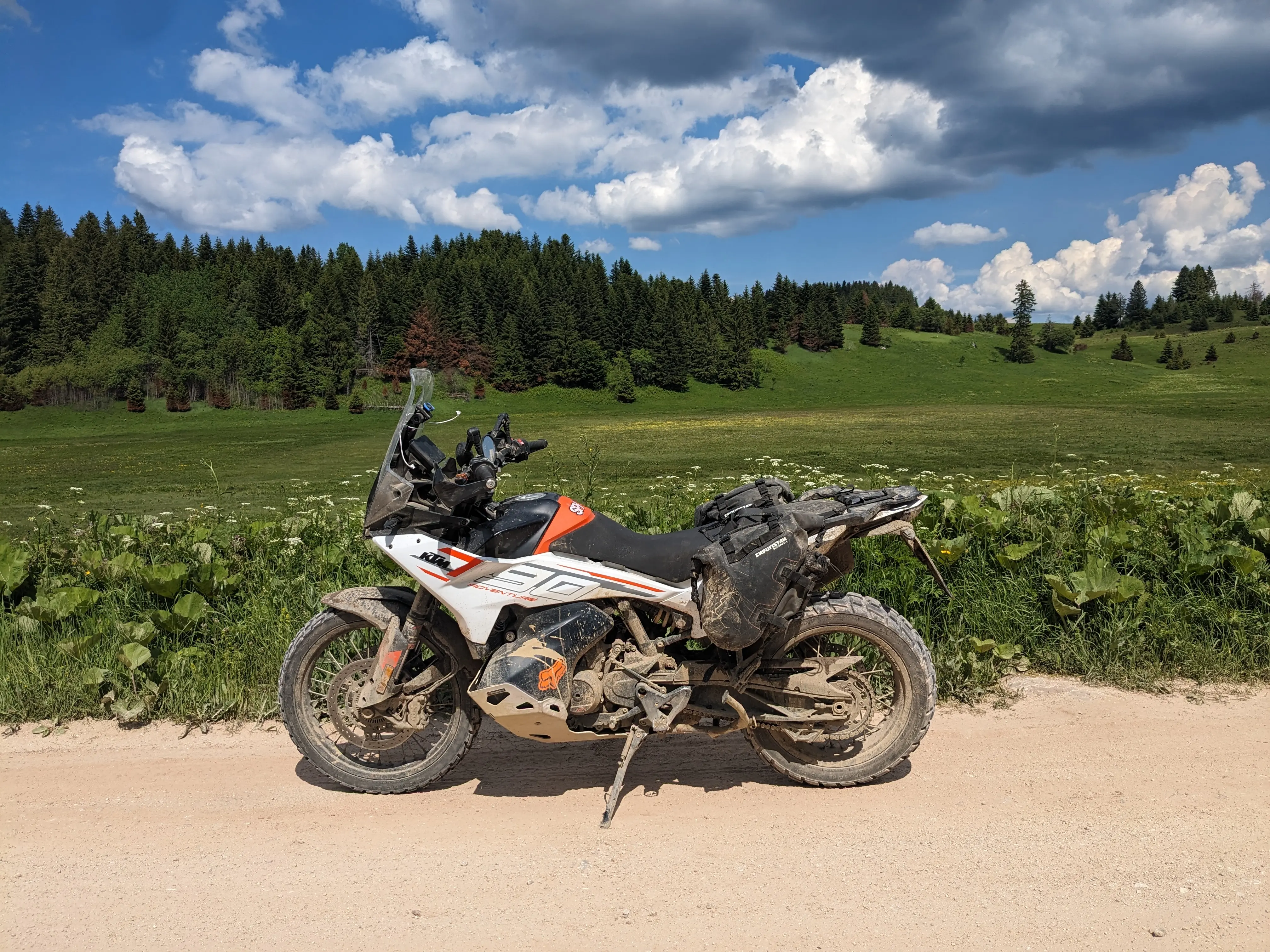
Once we figured out the Enduristan panniers we loved their simplicity. We both travelled on 24 liters.
The war in Bosnia and Herzegovina ended in 1995, leaving over 100,000 dead, millions displaced, and thousands of active mines. There were multiple occasions were we passed by group graves with 300 or 400 names written on the tombstone or plains that were completely altered by bombing.
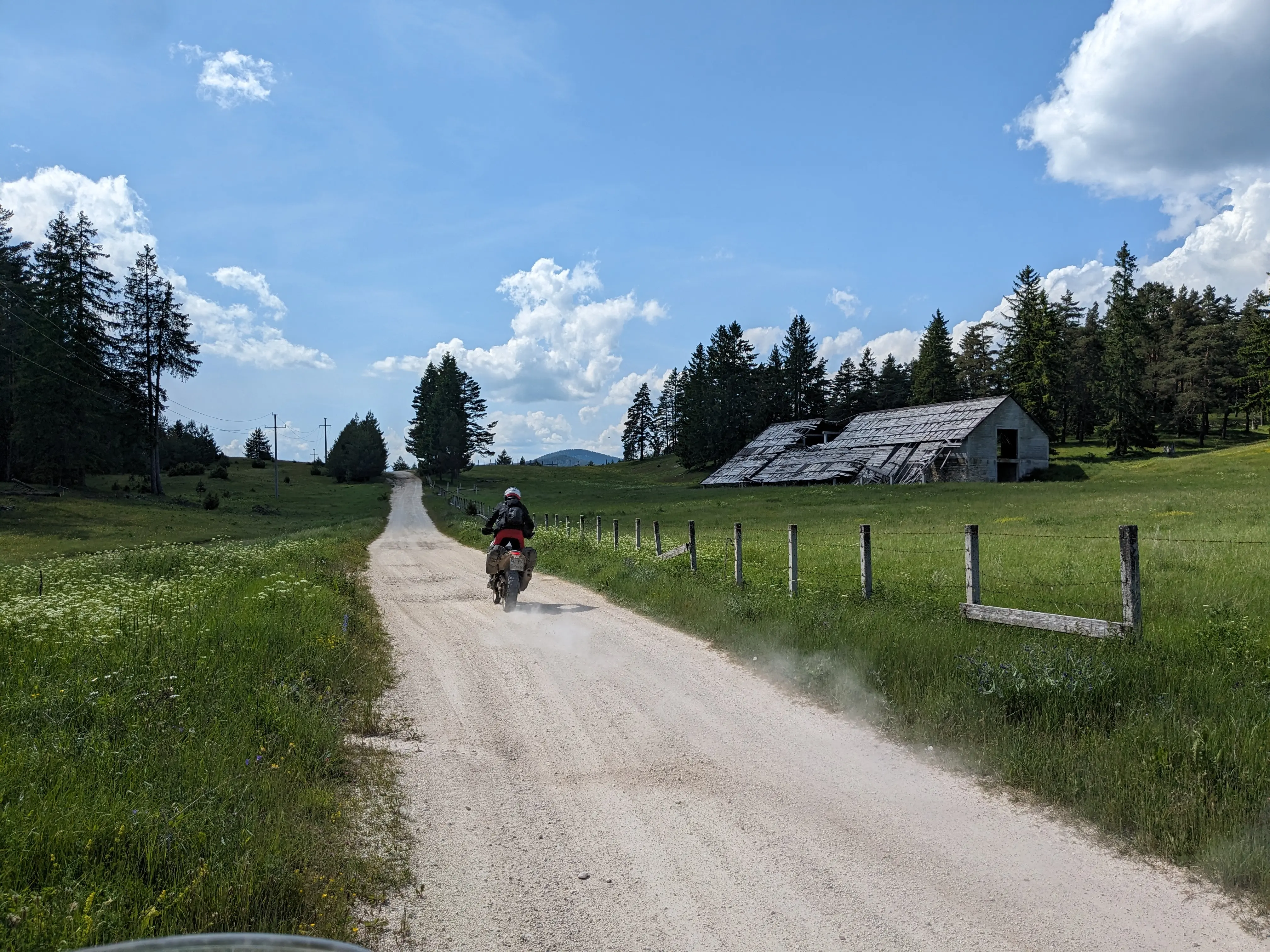
We were advised to stick to the road.
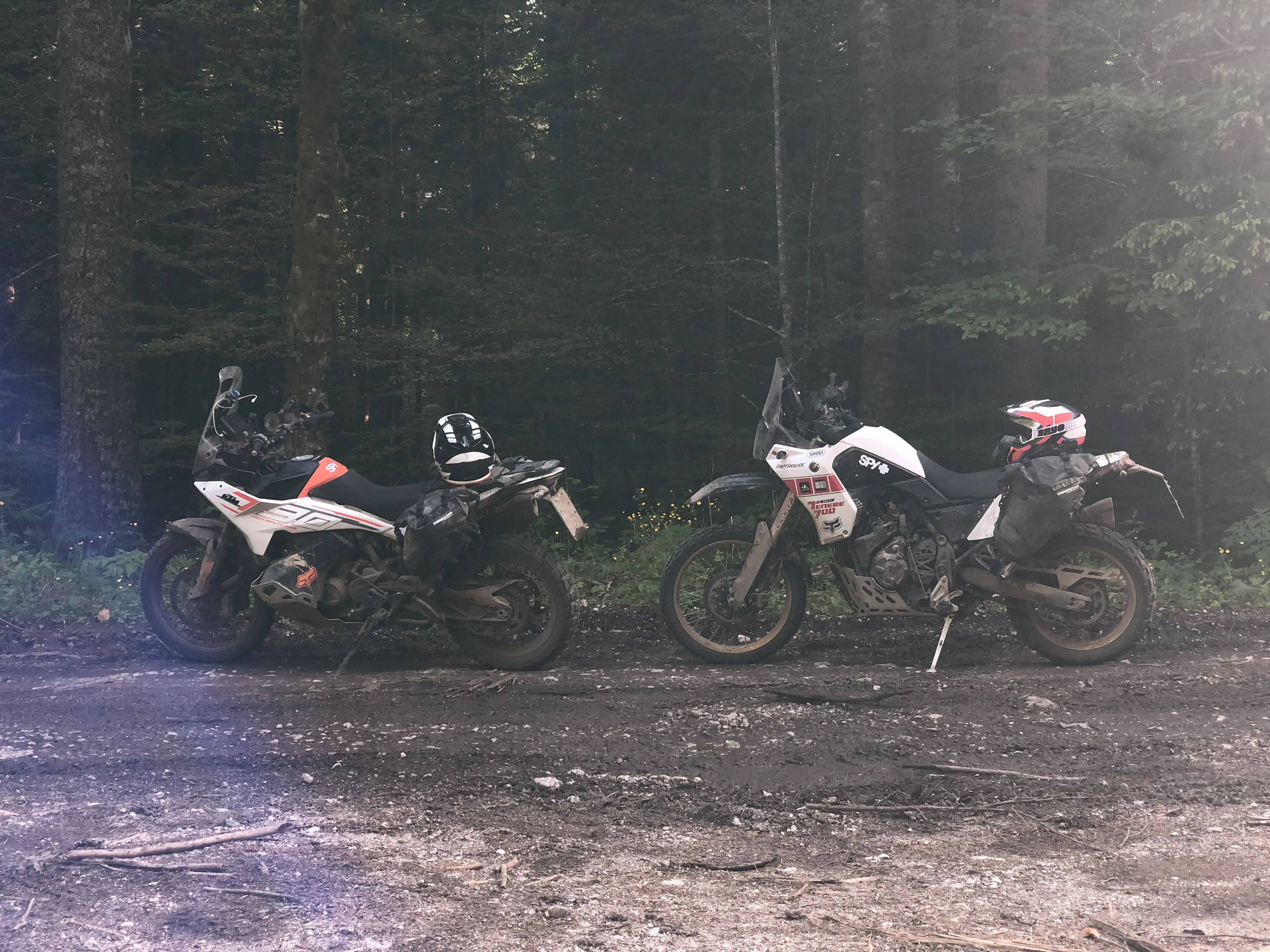
Dense forests and mud.
In Bosnia, we spent our first night in Mostar, a beautiful city, albeit a bit touristic, home to the UNESCO World Heritage site, the old bridge of Stari Most. The bridge was completely destroyed in 1993, but was reconstructed from the very same materials, retrieved from the river bellow!

Rama, an artificial lake built in the 60s.
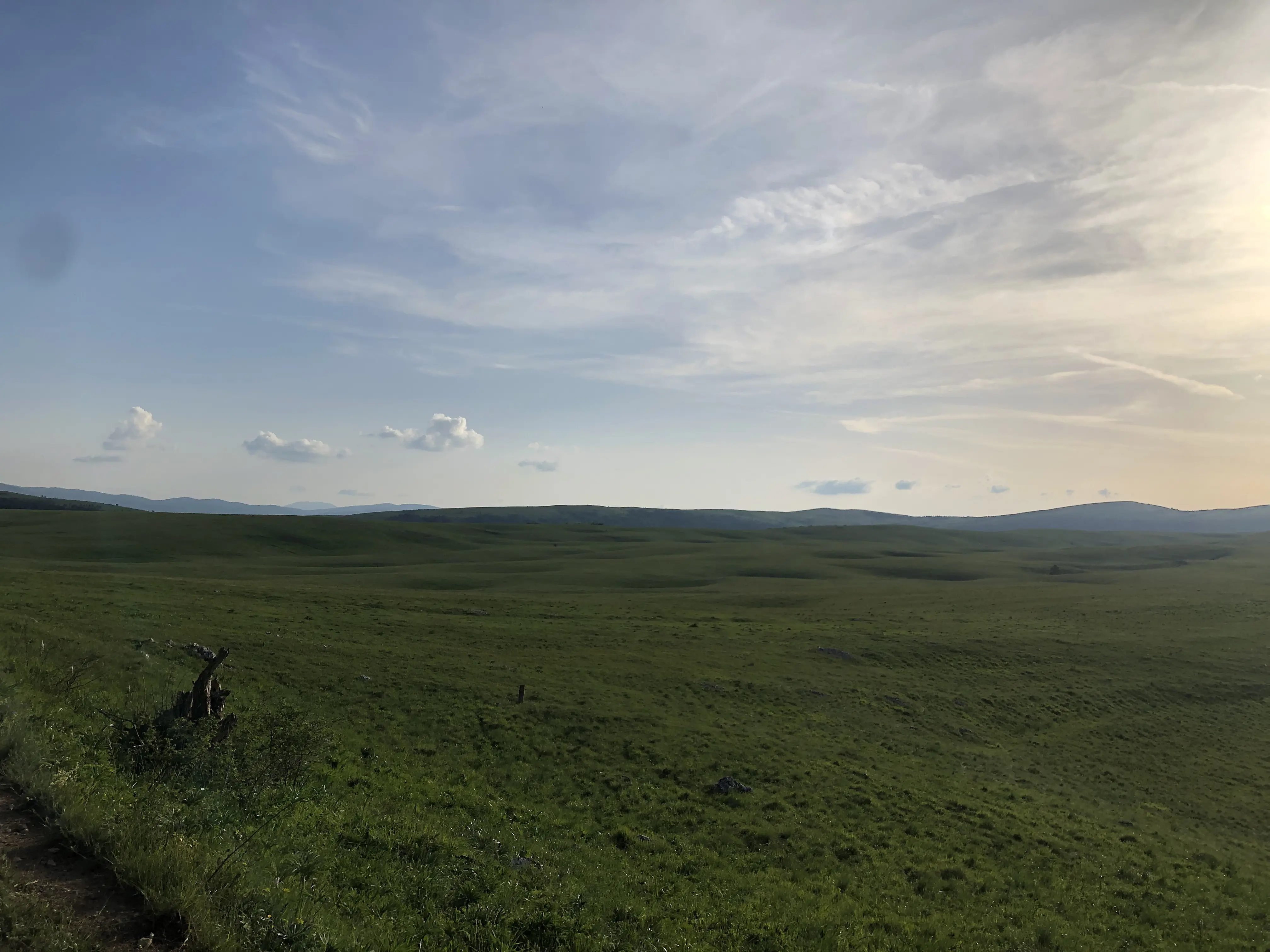
One of the many plains that had the scars of the war.

Šatorsko lake, our last stop before entering Croatia.
Our second night in Bosnia was near the border to Croatia, at Glamoč. Nothing special, just a night’s sleep, and off to Croatia. At Knin we decided to have a rest day and do some sightseeing. Their fortress is actually the most important stronghold of Croatia and has had a turbulent history.
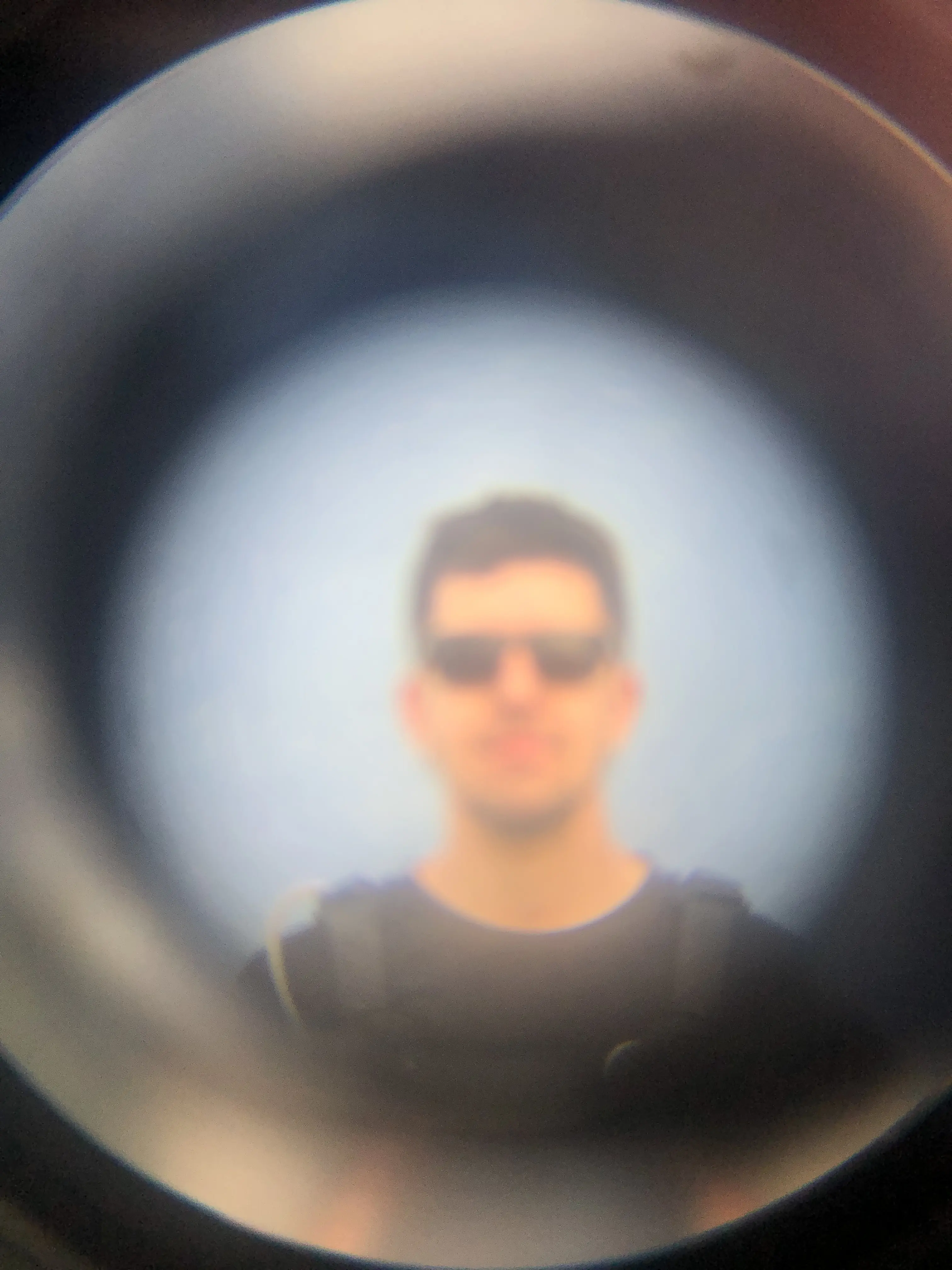
At the castle of Knin.
The next day, the dirt section of the TET was fairly easy, so since we were close to Plitvice Lakes, we decided to take a detour and visit the national park.
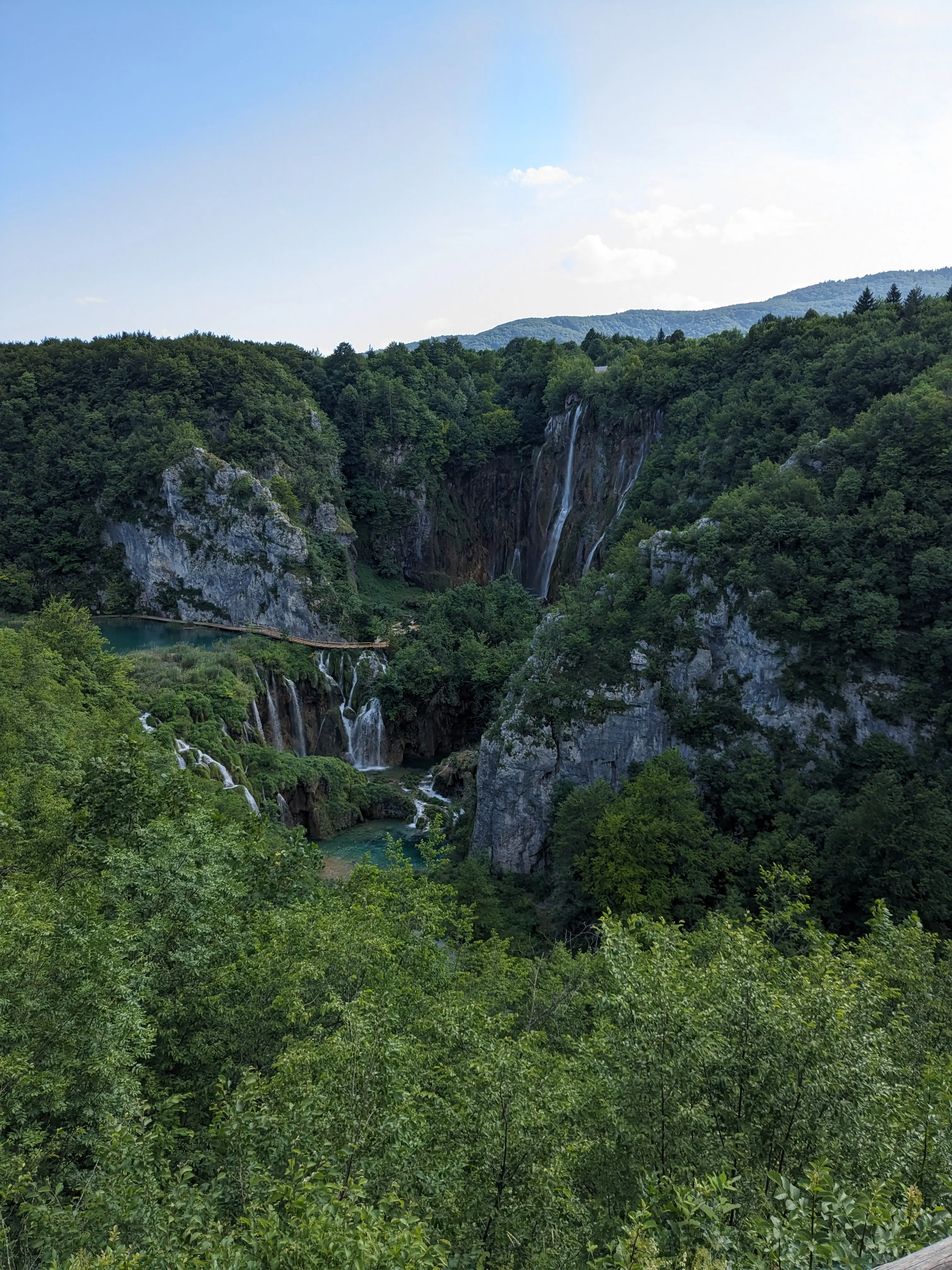
This was the first thing you saw after the parks paid entrance 🤯 (entrance 2).
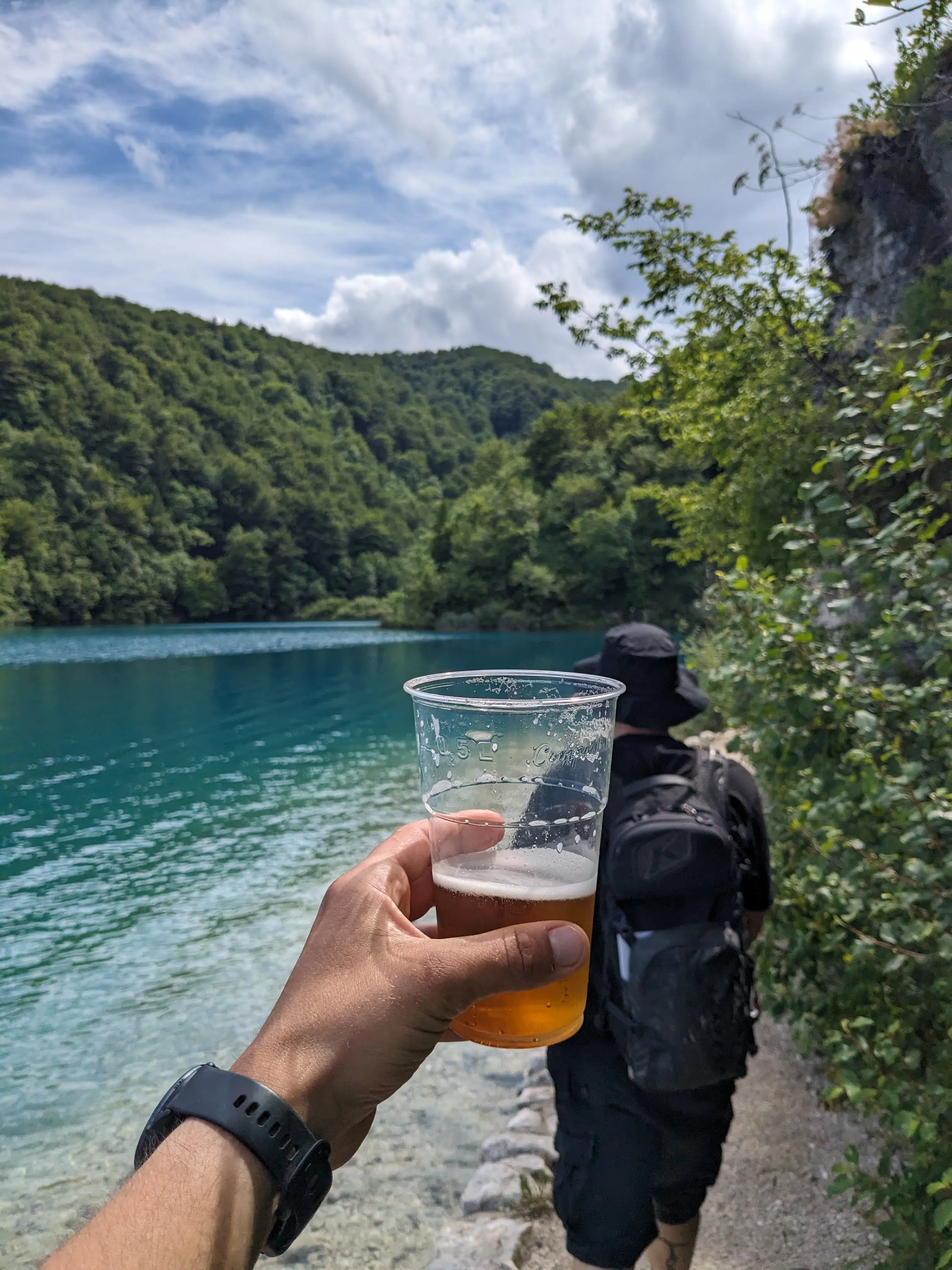
We took the long way around as fewer tourist preferred it.
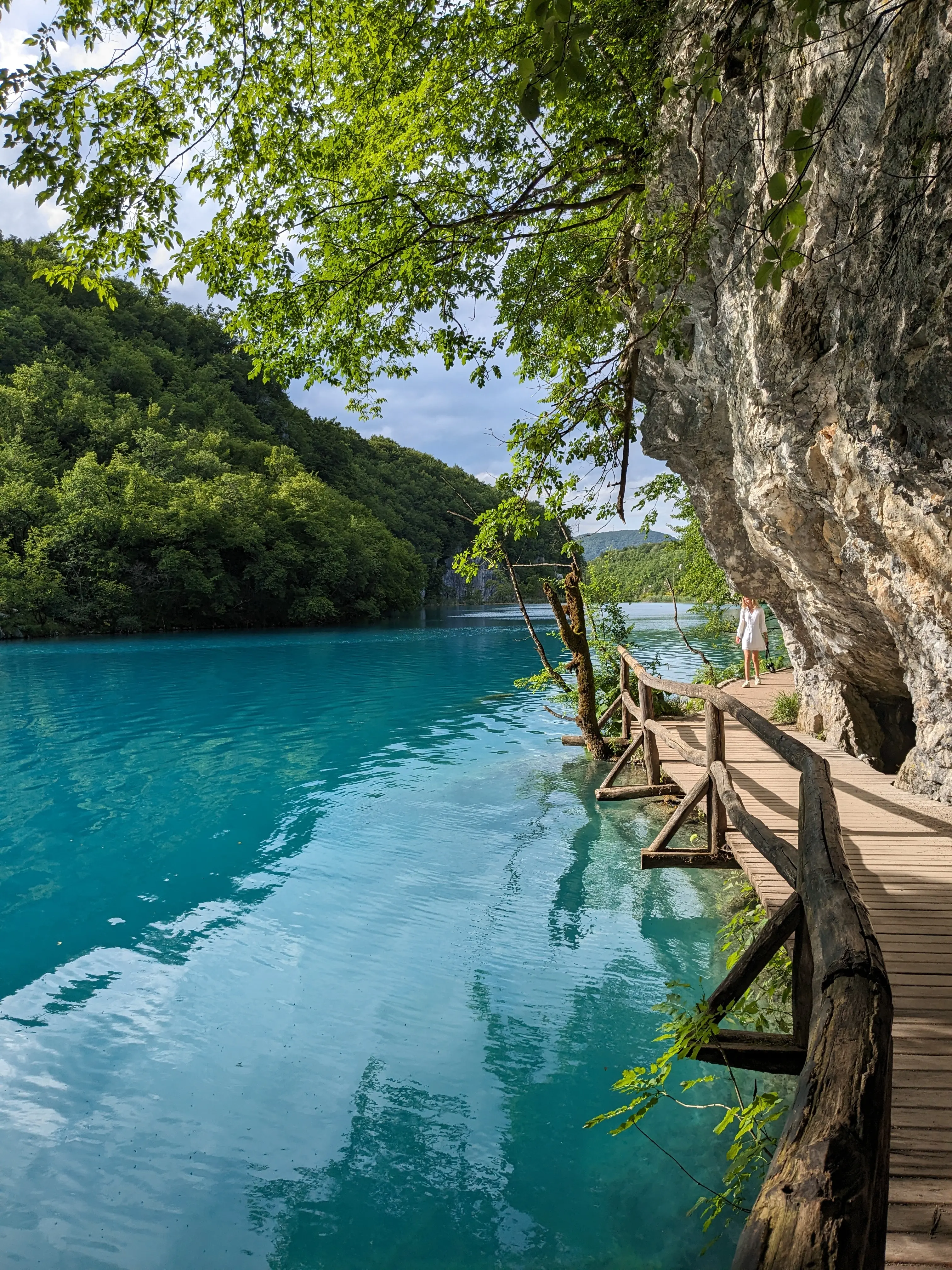
There are 16 lakes across a 300 sq km protected area.
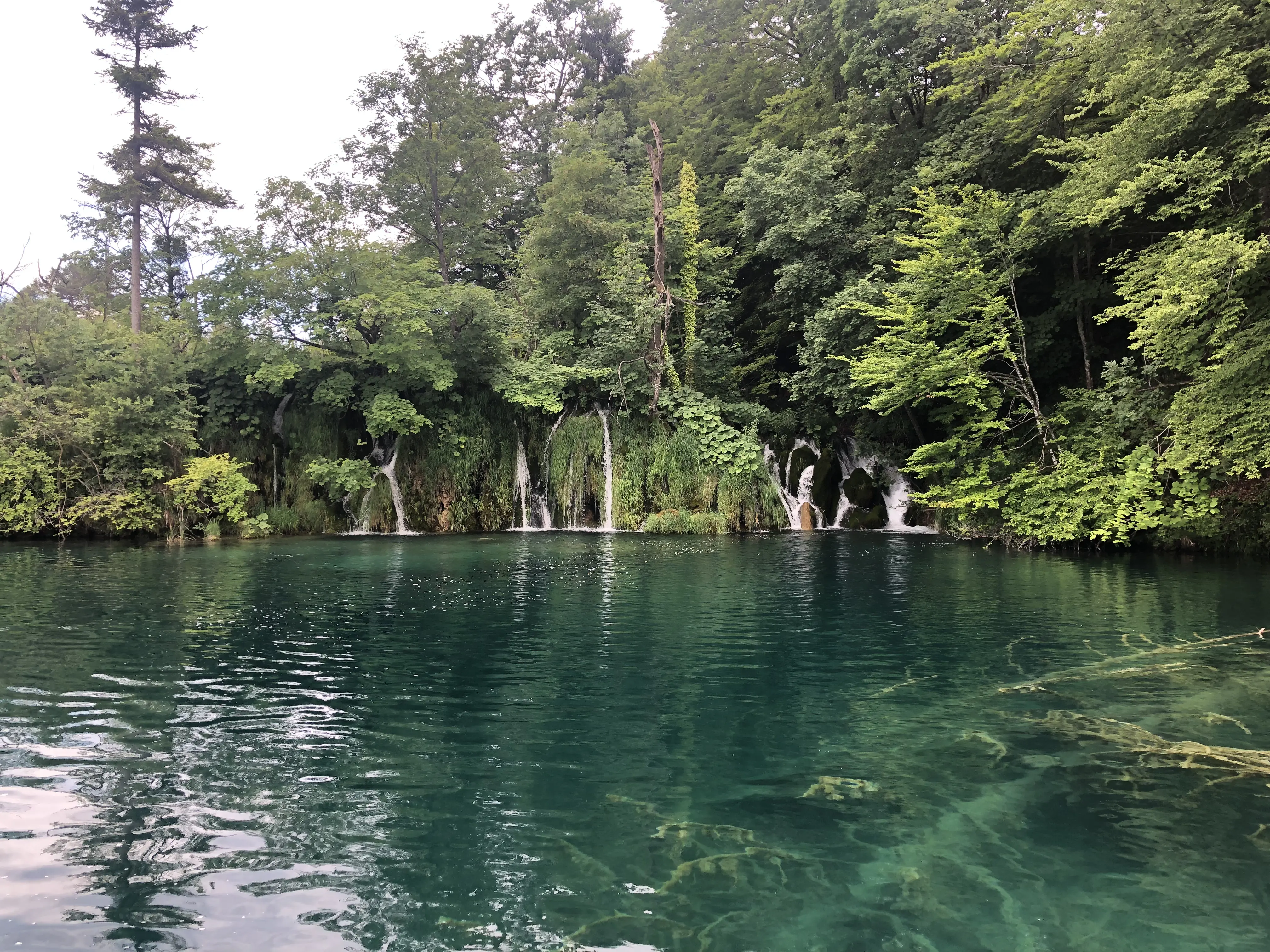
We only had time for 1/3 of the park as we arrived late noon.
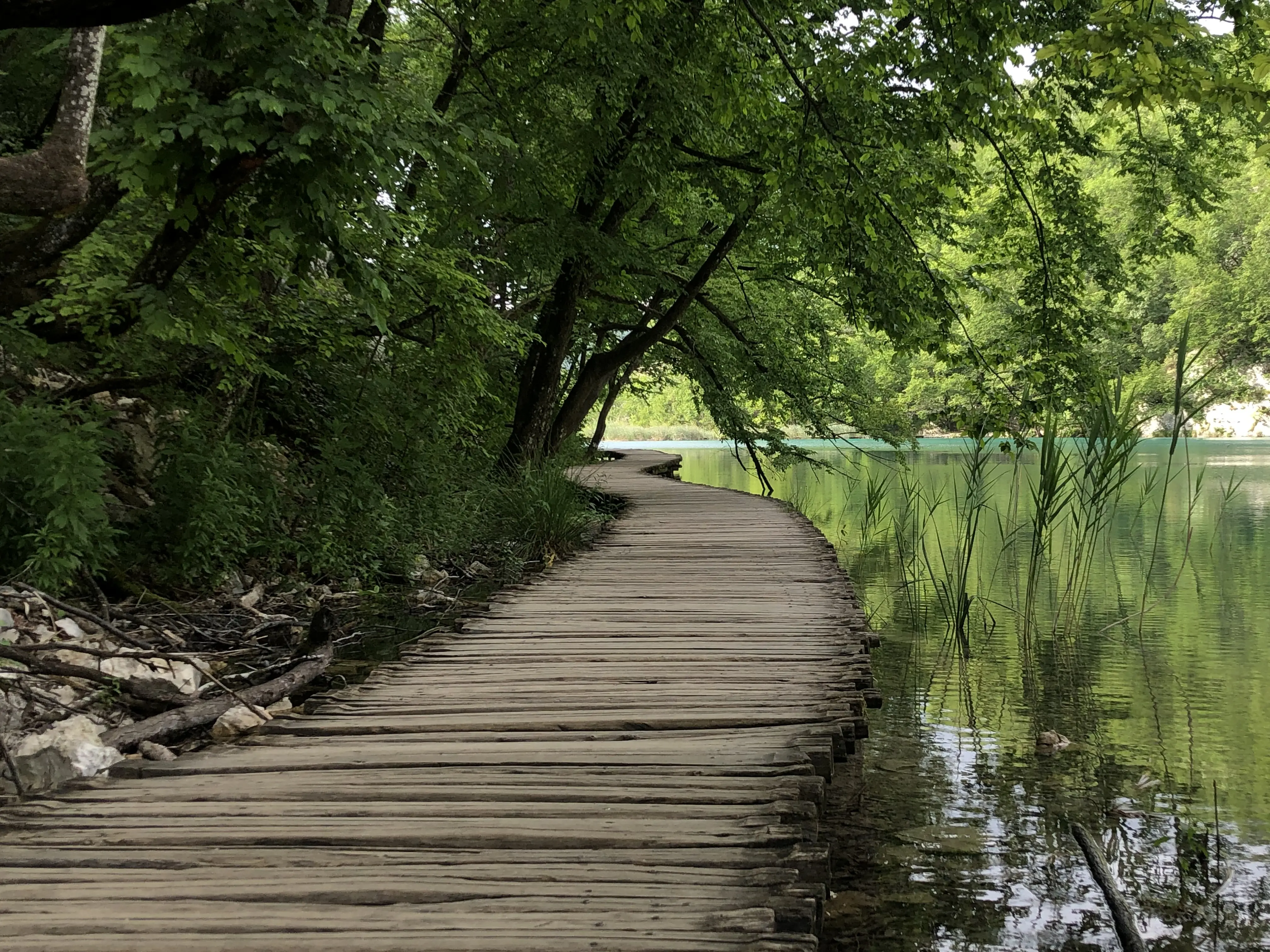
The park is better visited late as there are close to no people.
We found a stay near the lakes, and the next day we were off to finish the Croatian TET. We woke up to rain, but the weather quickly got better.
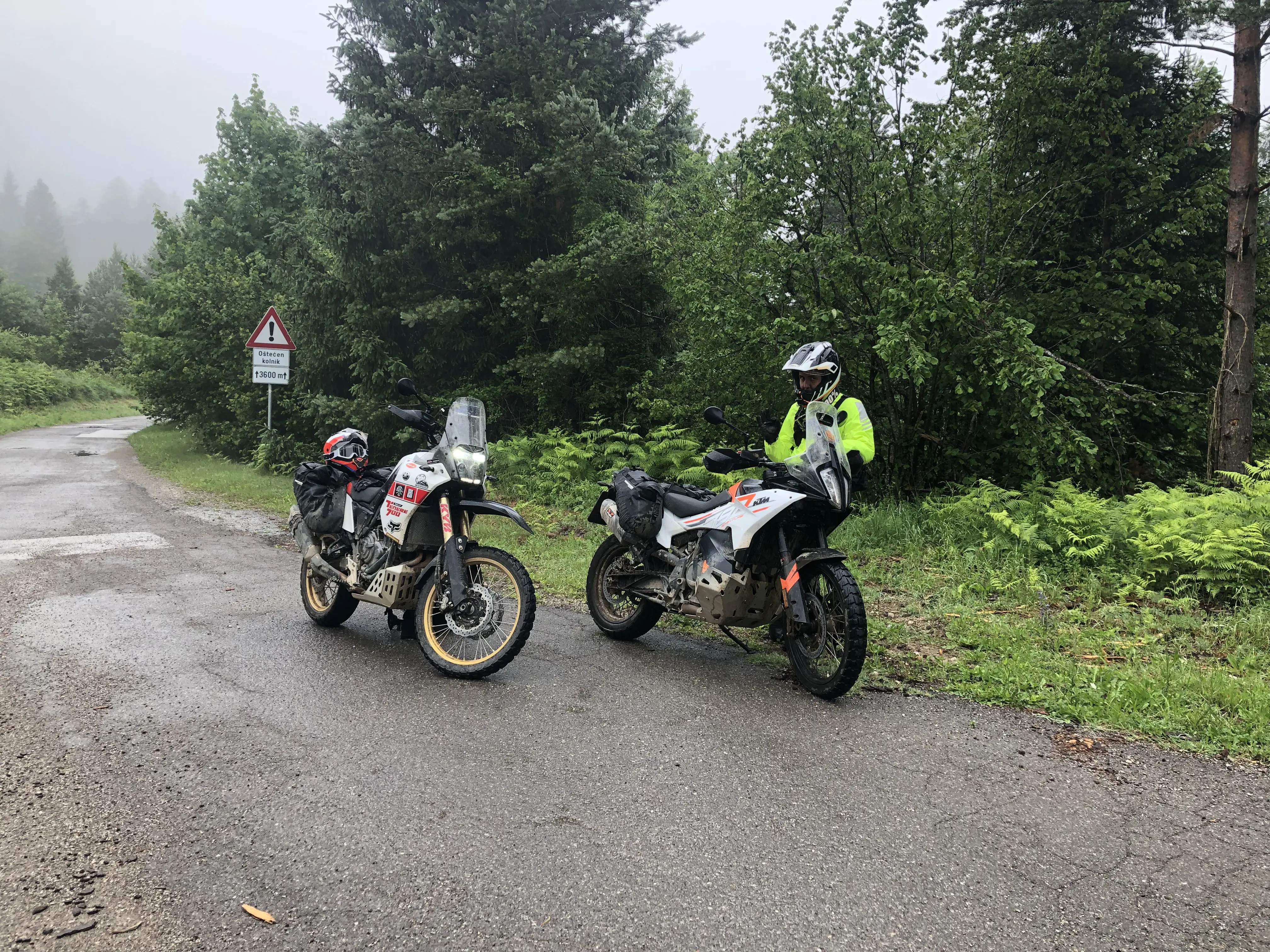
The only time we had to wear our rain gear.
The TET ends at the Slovenian boarder, near the town of Delnice. We chose to skip the final section since it was paved and instead headed to Zadar for our first overnight stay on the way back. We chose Zadar as it seemed good-looking enough on the photos (as it actually was irl) and it was on our way as we wanted to visit Split and Dubrovnik.
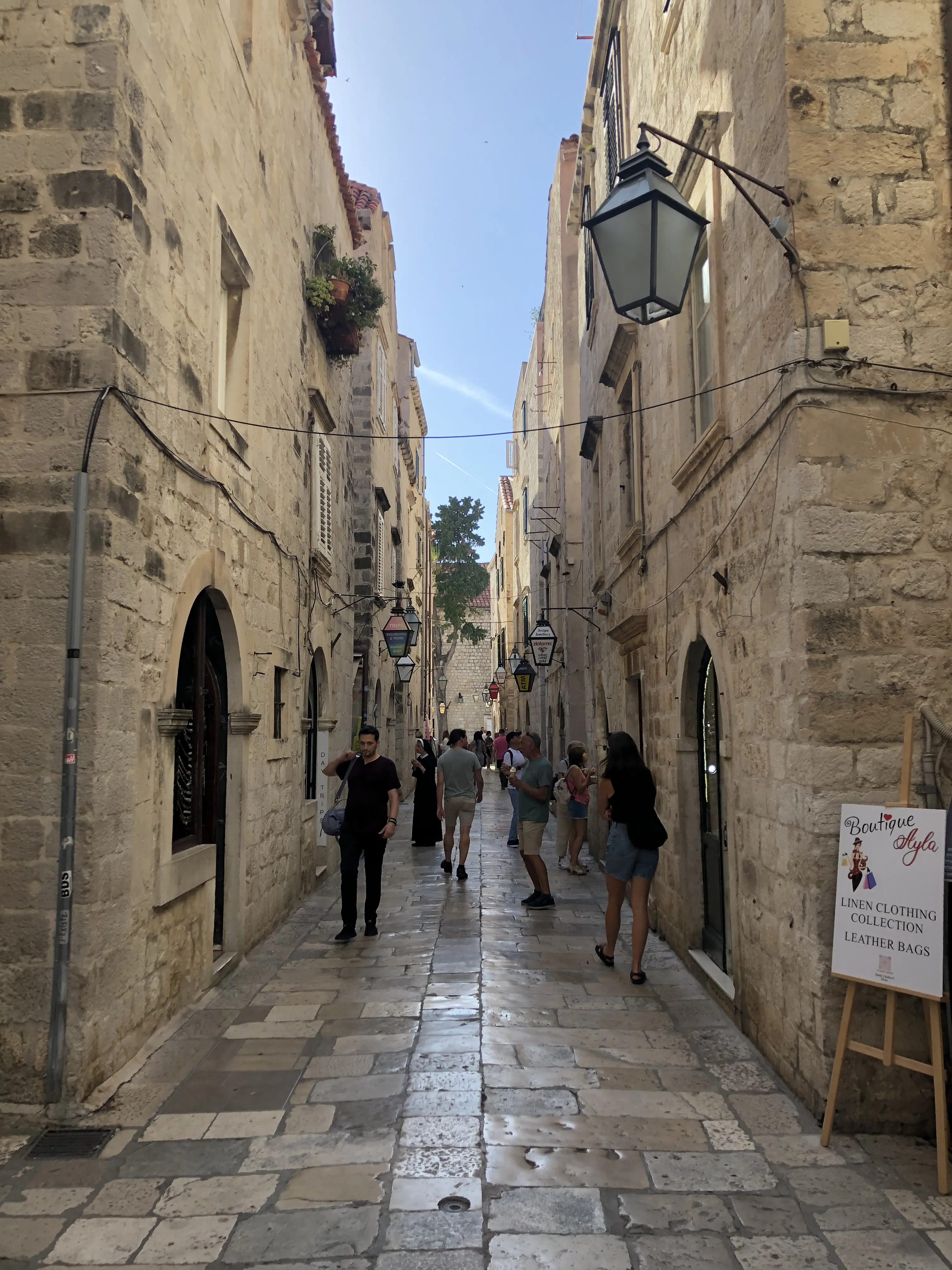
What spoiled Dubrovnik for us was the overwhelming touristy atmosphere and the high prices.
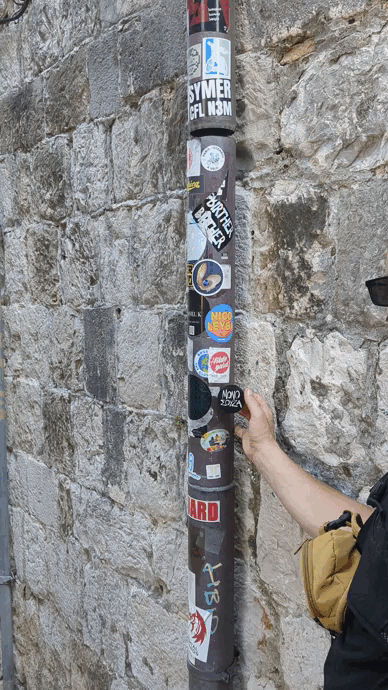
Only wheelie.
We spent an additional two nights in Montenegro because it was our favorite of them all. The first night was in Kotor, and the second was back in Podgorica.
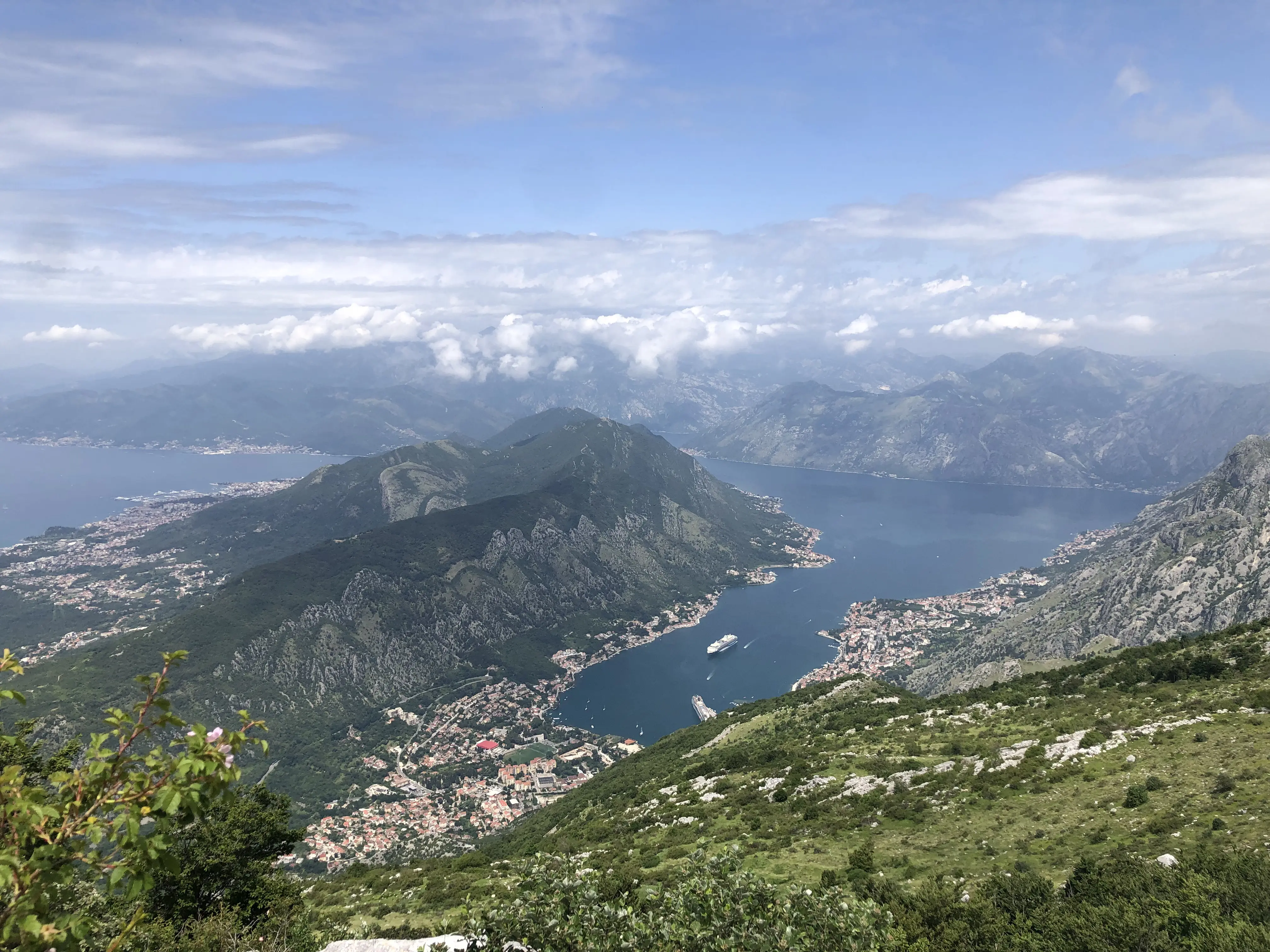
Kotor from the highest viewpoint.
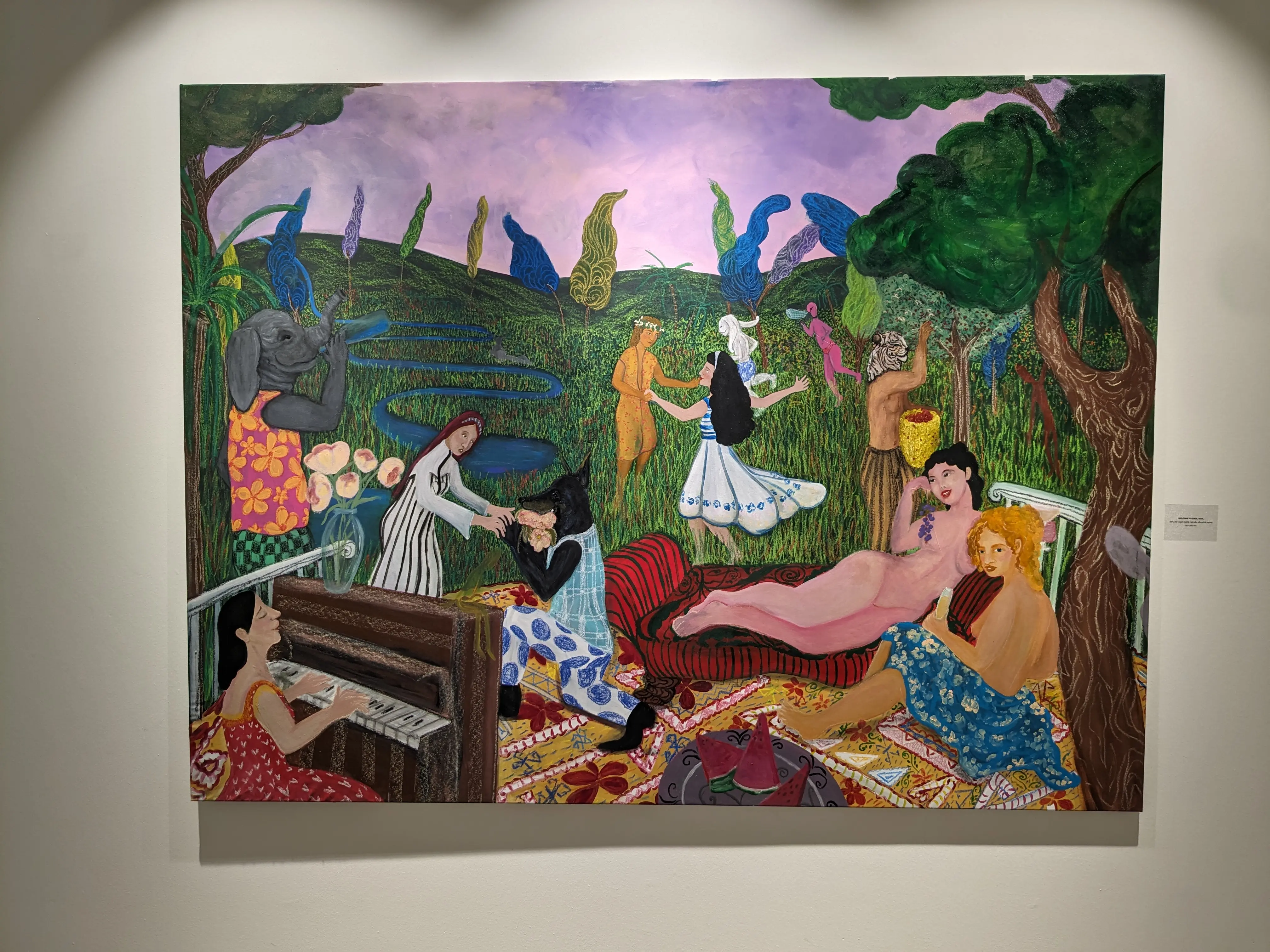
A gallery we visited at Podgorica.
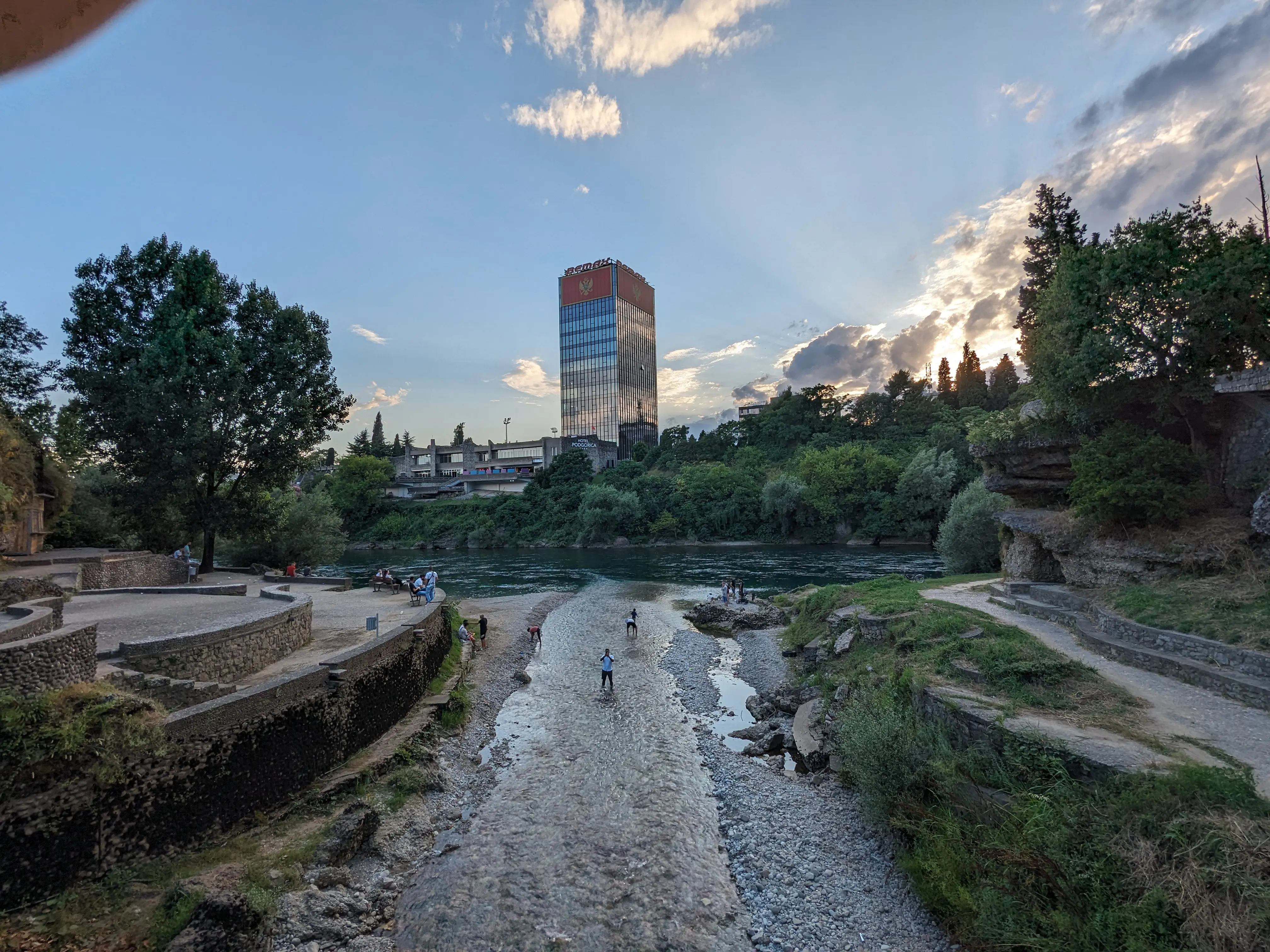
Various activities are performed in the river that passes Podgorica—from swimming to canyoning.
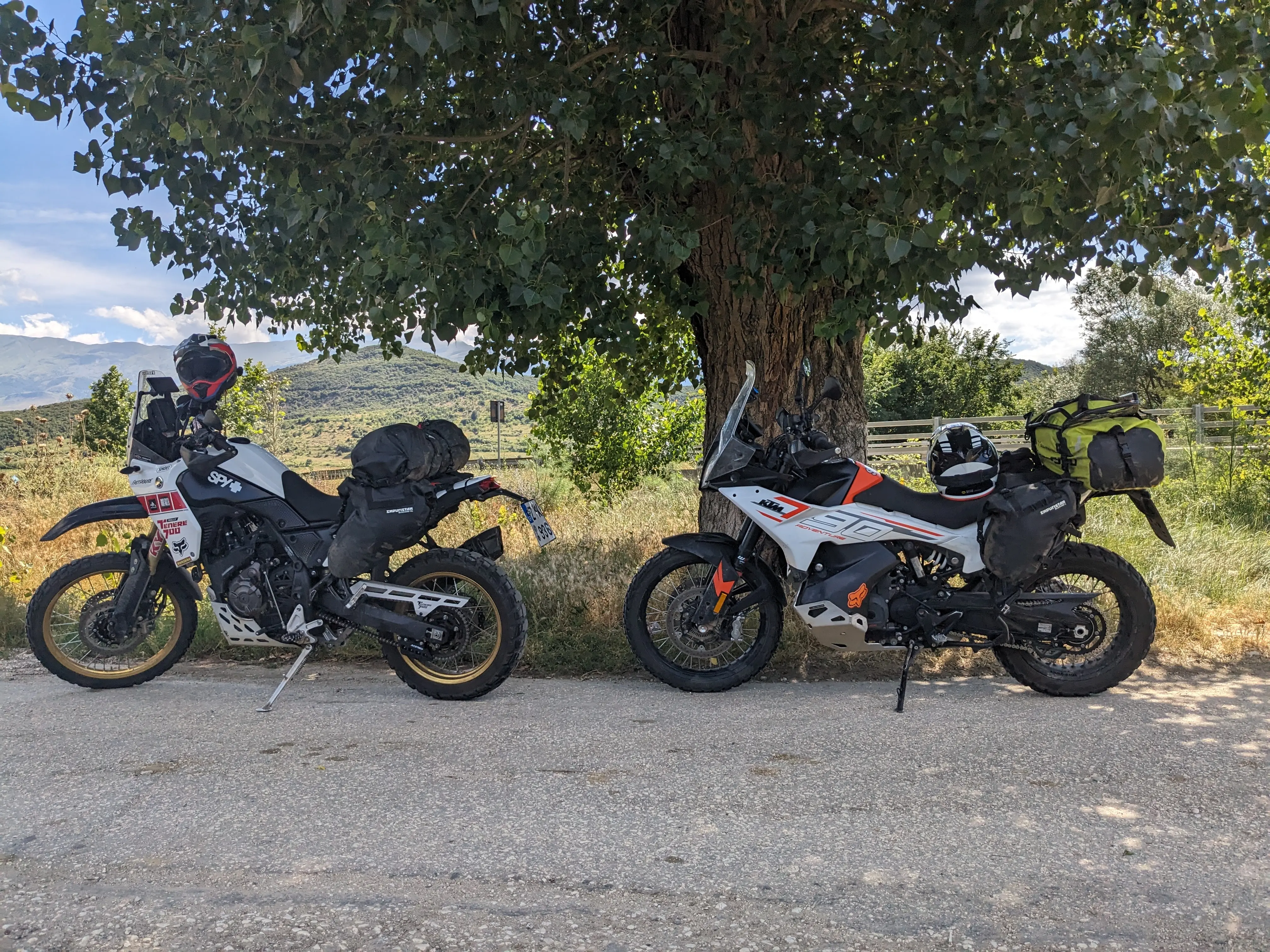
Our last stop at Albania before crossing the border to Greece.
With an extra day left, we decided to stay in Ioannina and then take the Greek TET to Spercheiada through Agrafa. Unfortunately, the Tenere had other plans and started leaking oil from the previously repaired spot. Luckily, we found a stronger metal glue at Ioannina, and repaired it without losing any of the oil. Because we lost a couple of hours in that process and had a lot of riding to get to Spercheiada we decided to skip that part and go straight to Athens.
Wrap up
Being our first major off-road motorcycle journey, we learned a lot.
- Enduro clothing is the way to go for such trips. Although disadvantageous on a highway crash, their off-road protection and high-temperature comfort is unparalleled.
- Camping can be challenging for two people on motorcycles. An alternative approach we’re interested in trying involves setting up a stationary camp and exploring the surroundings, rather than camping along the way when covering long distances.
- Thirty liters are enough to carry your personal belongings and tools.
- A break of 1–2 days in the middle of the trip is necessary for rest.
- The rack-less panniers take some time to figure out, but once you do, you almost forget they’re on the bike.
- What can go wrong will go wrong.
Up next is Cappadocia with a pillion!